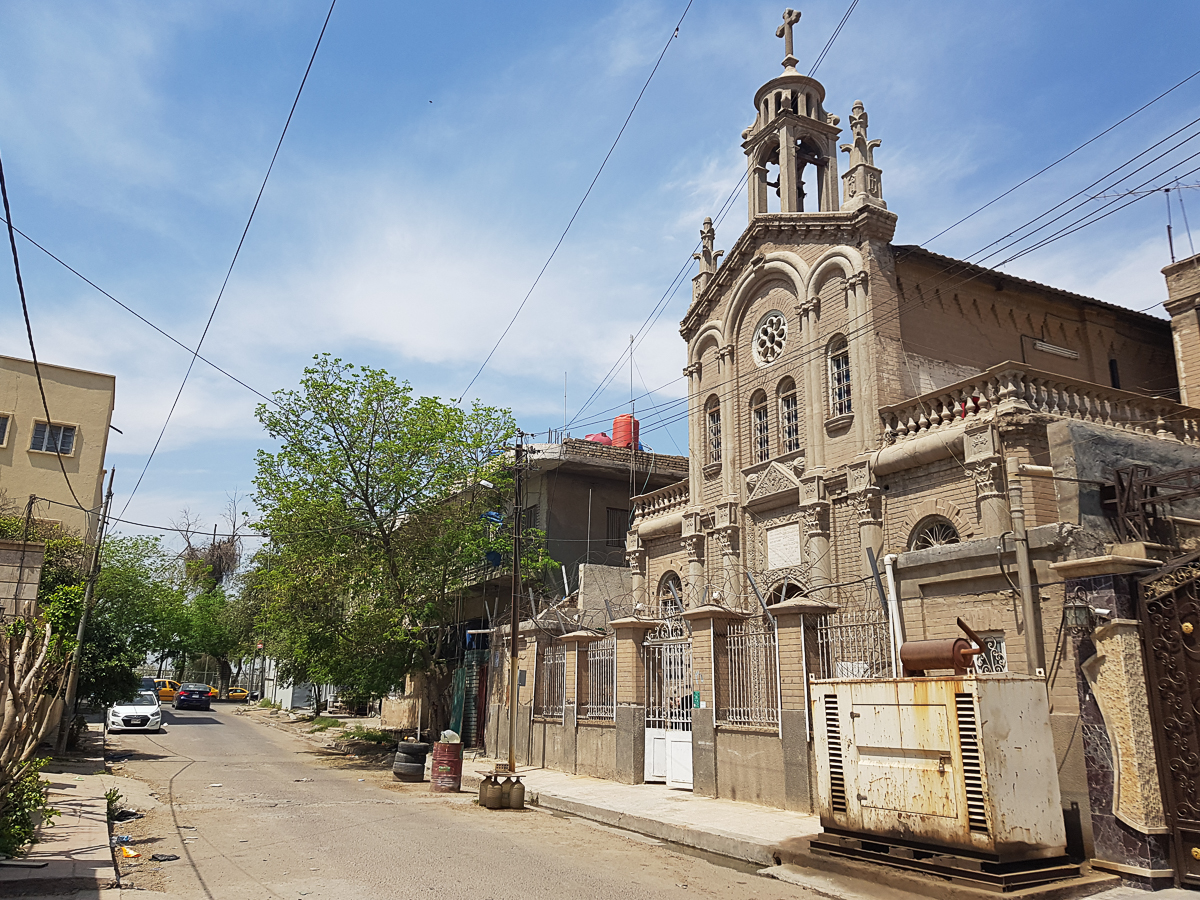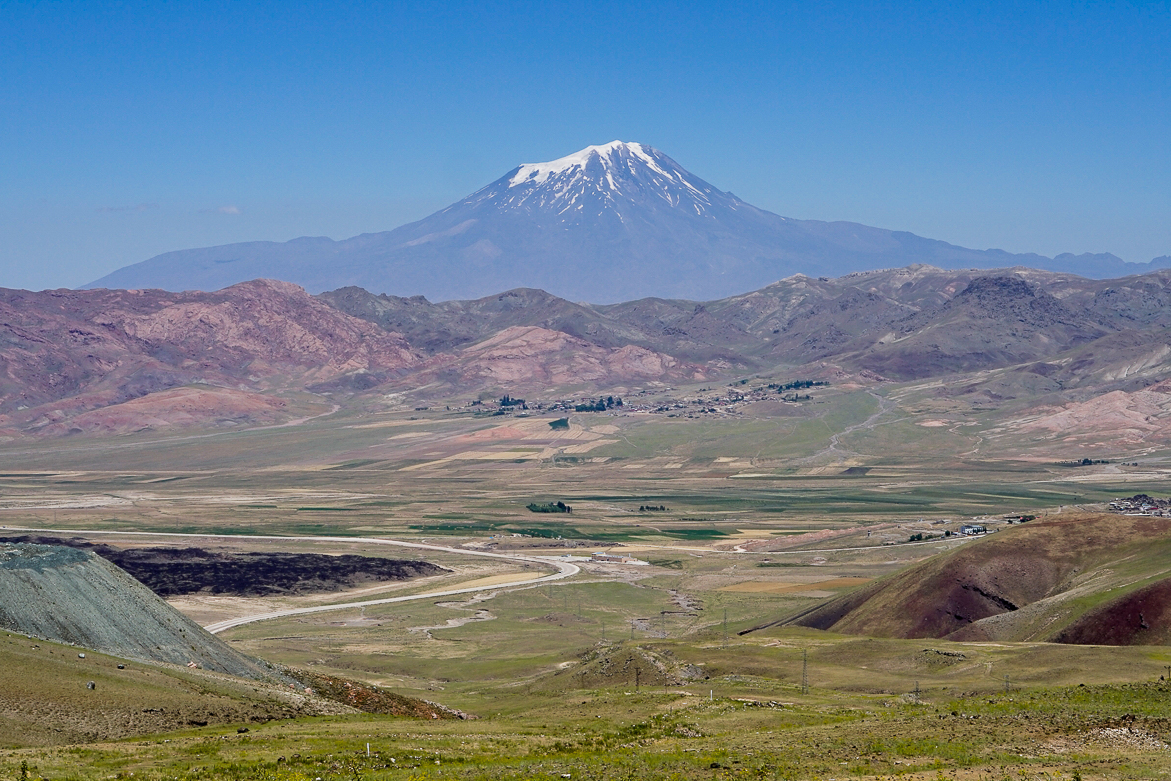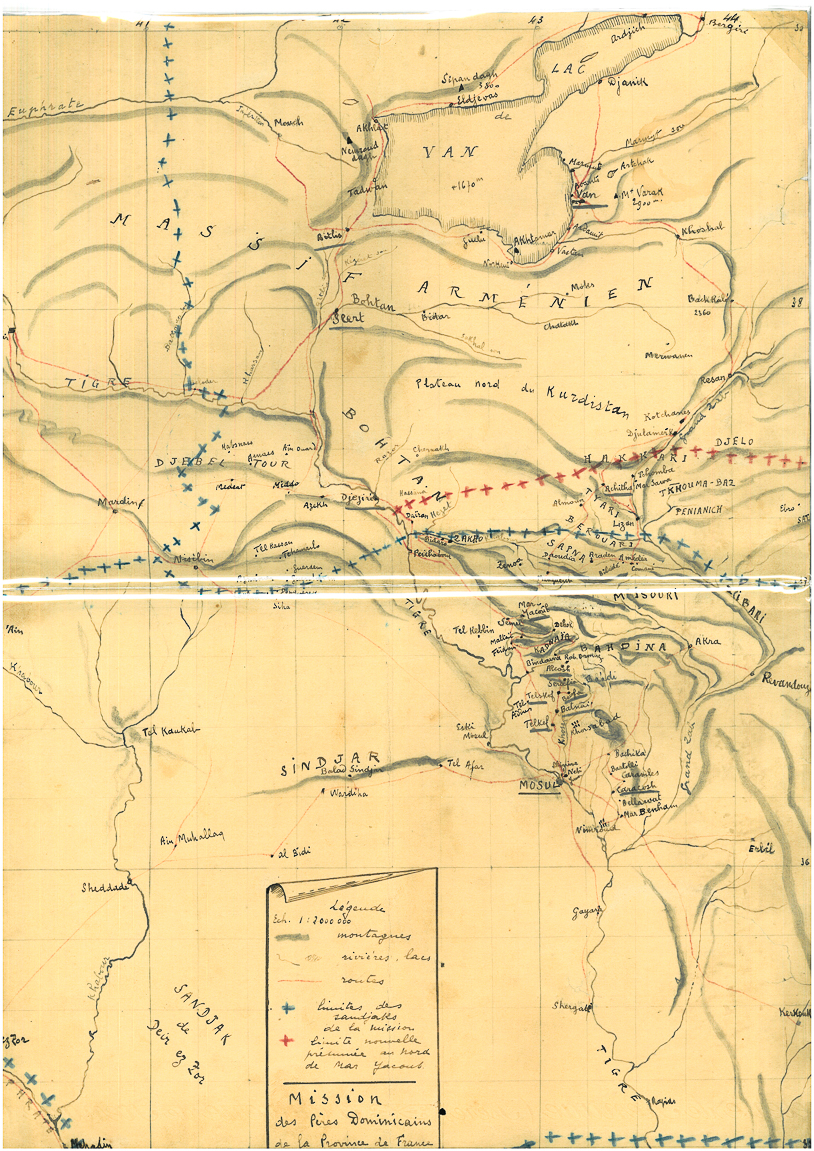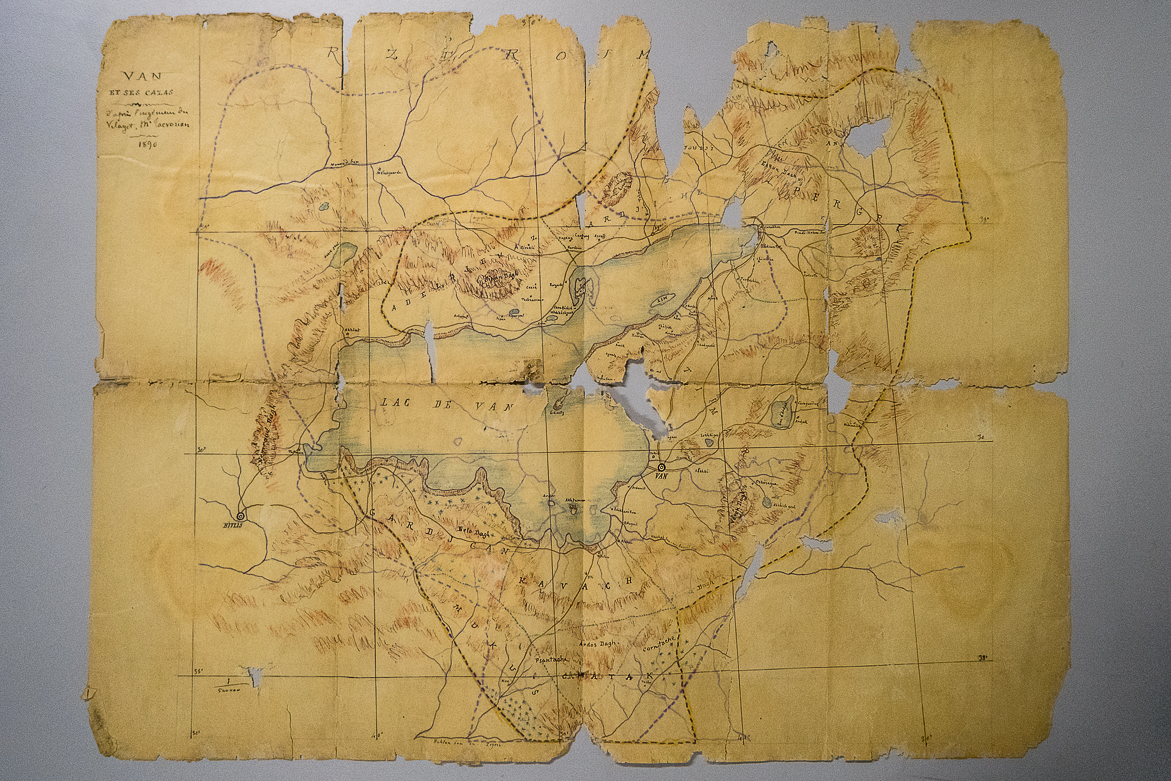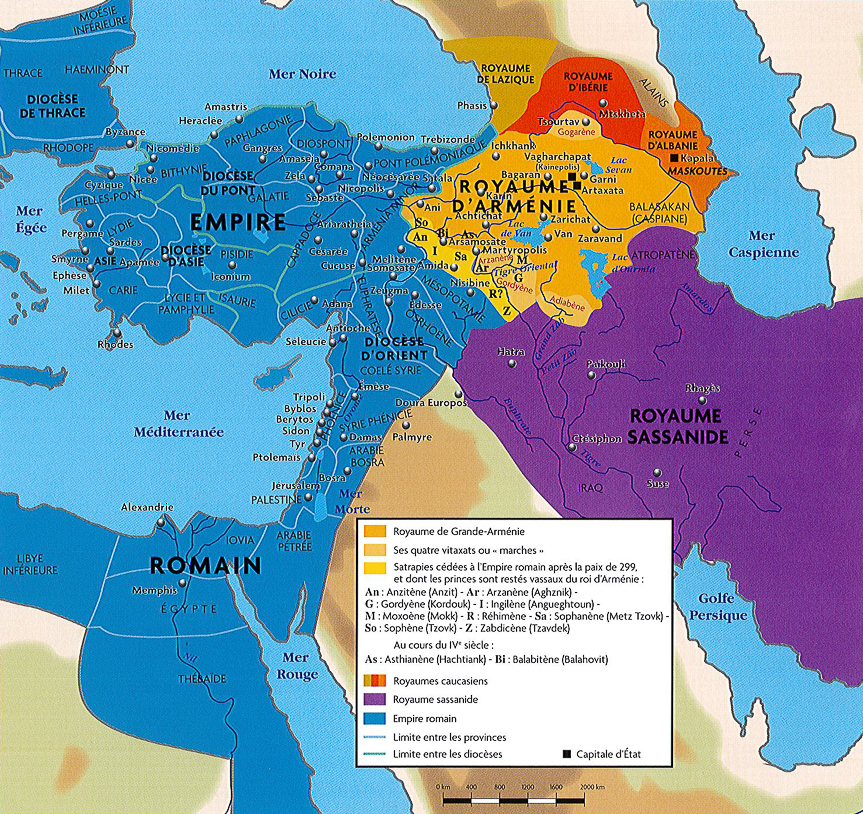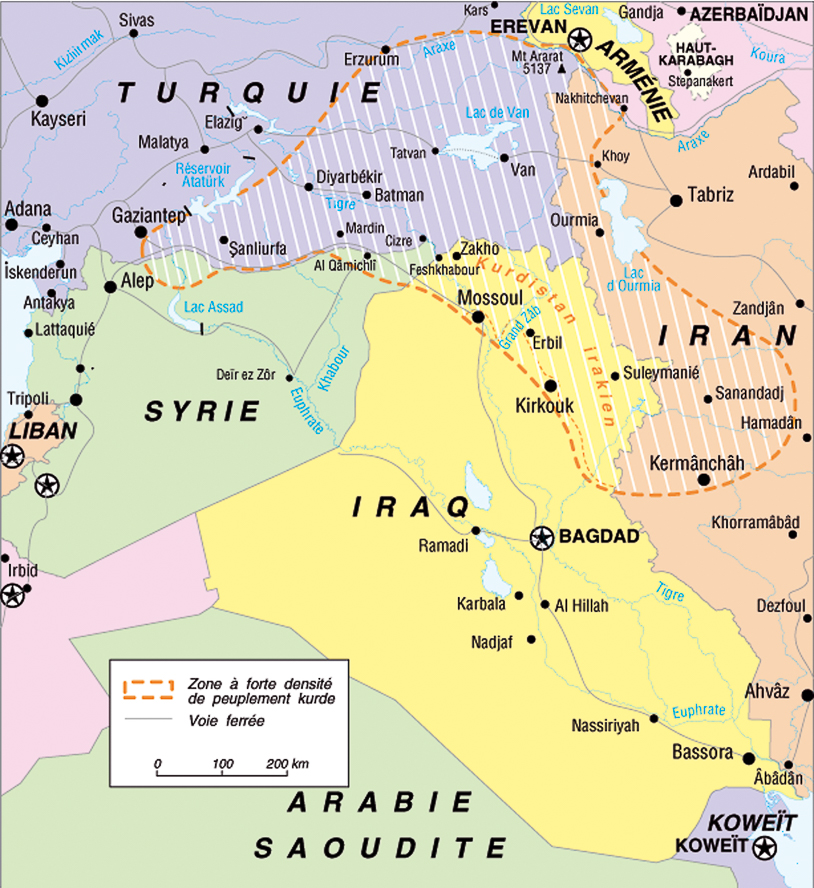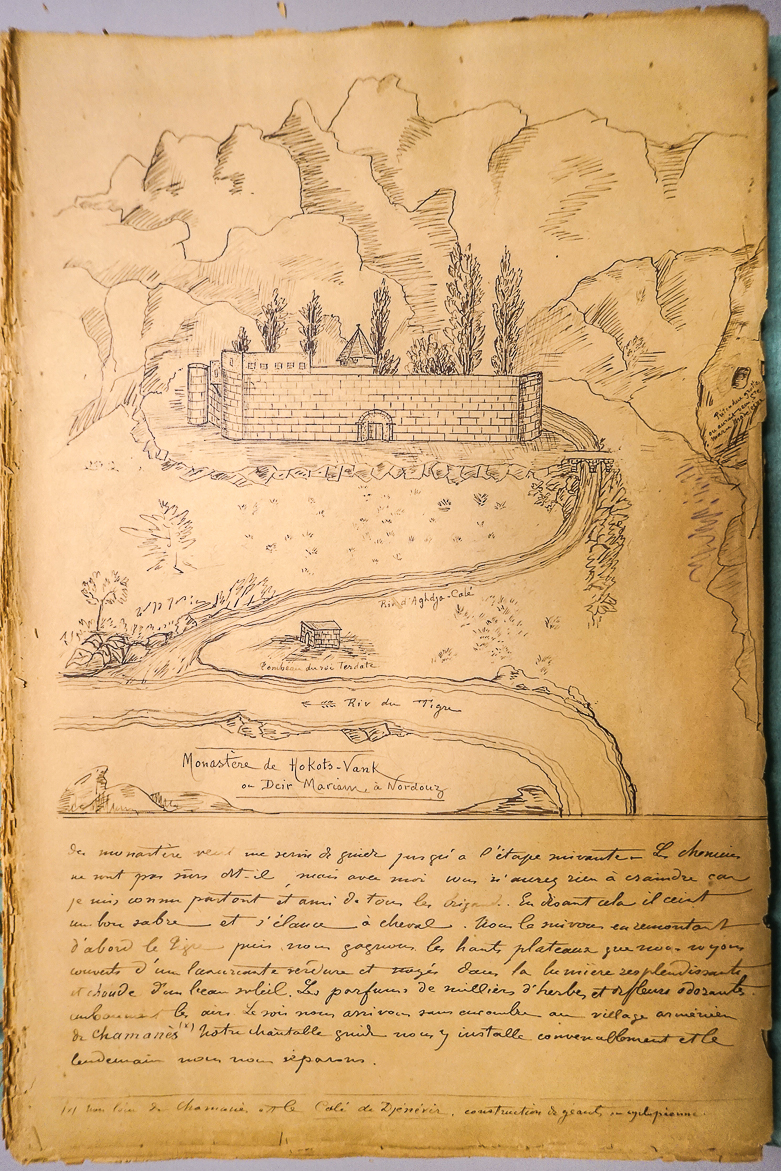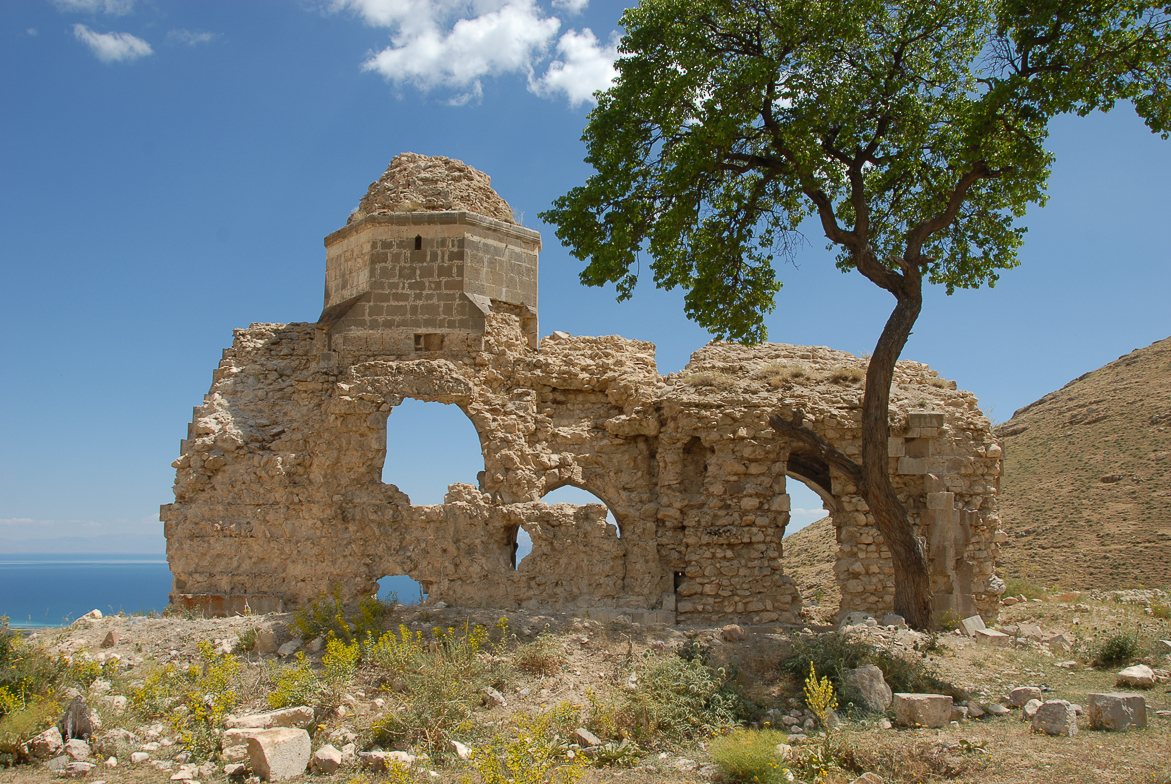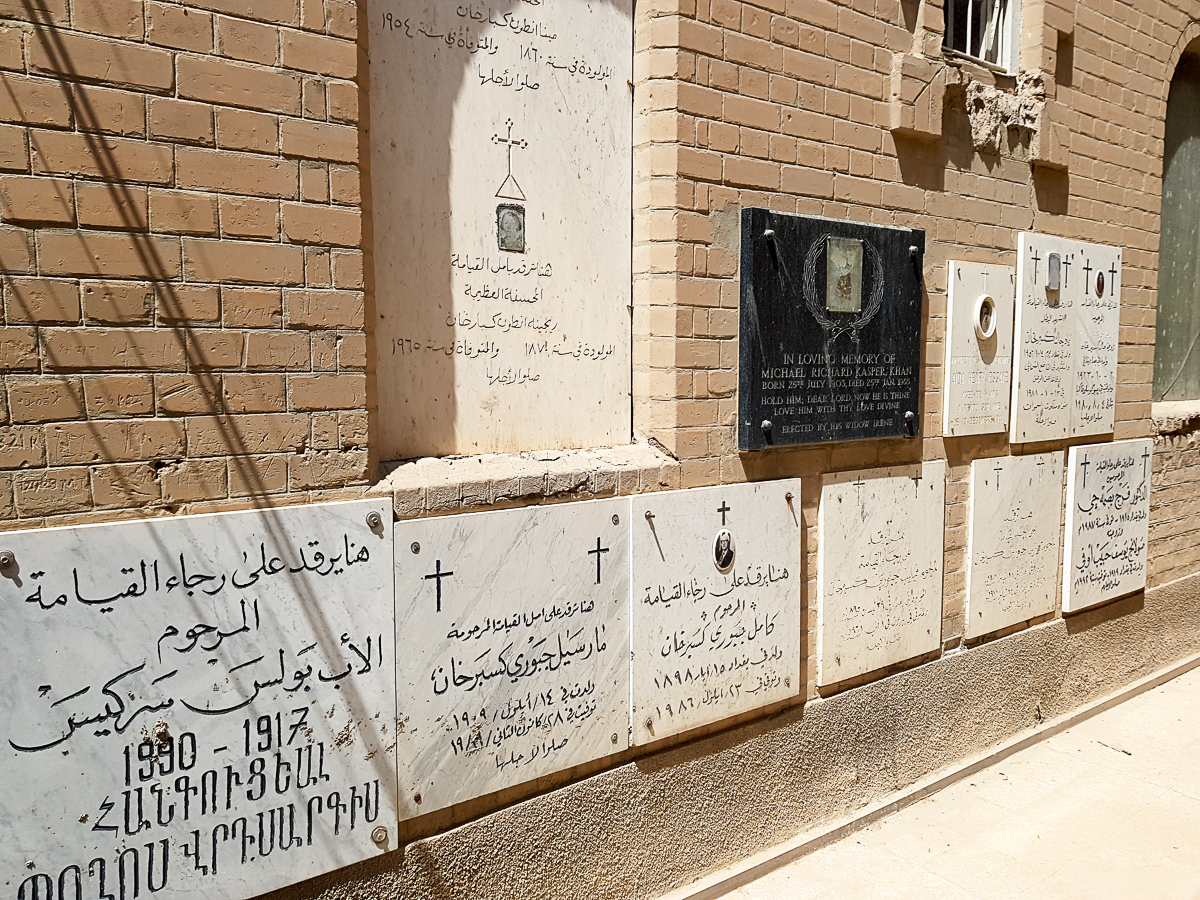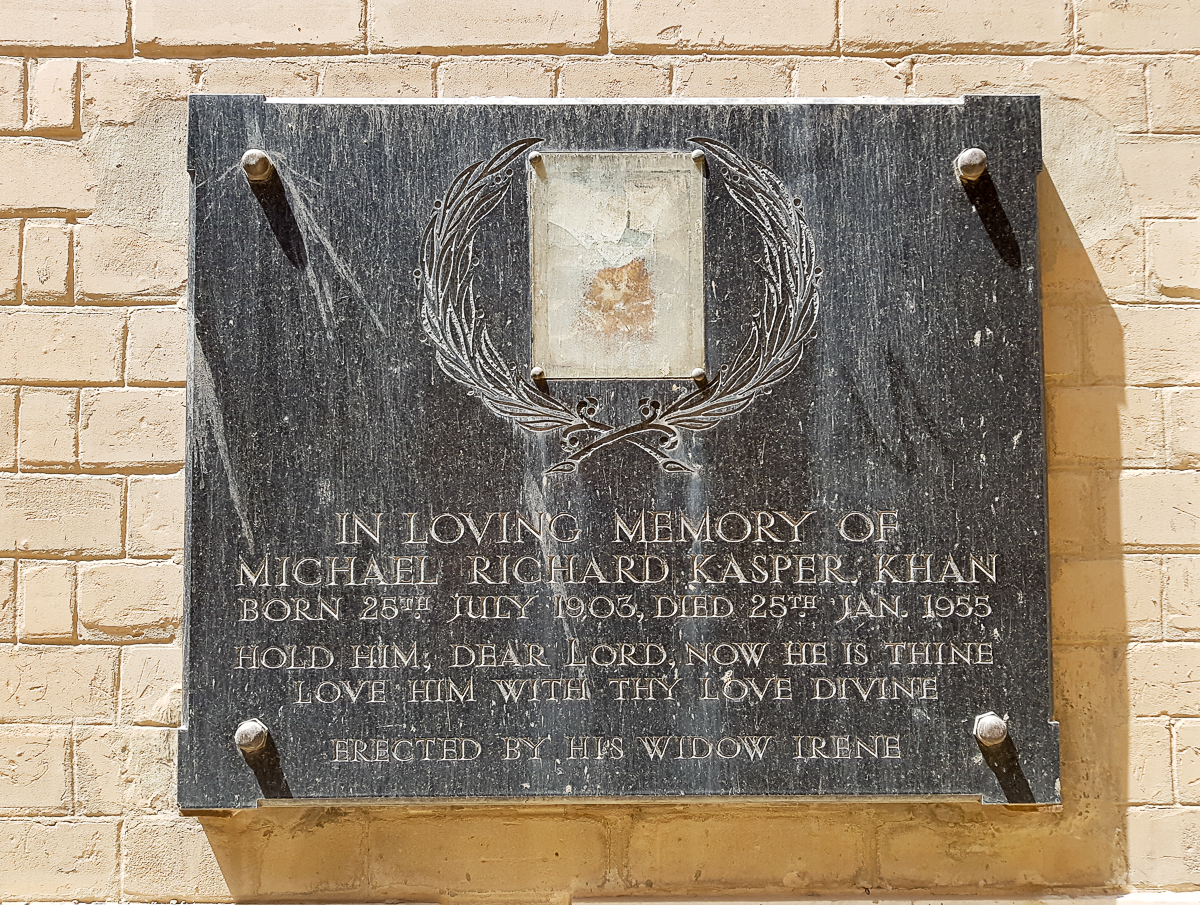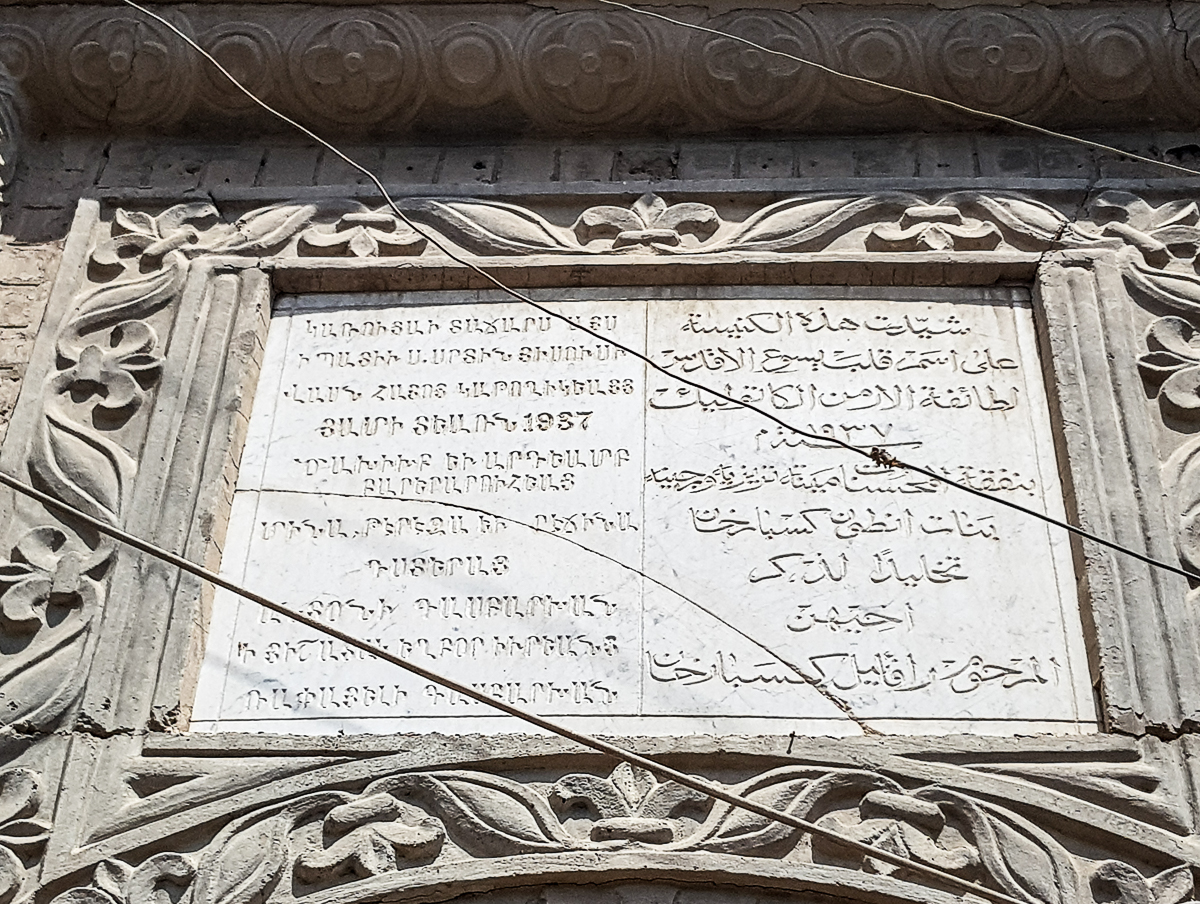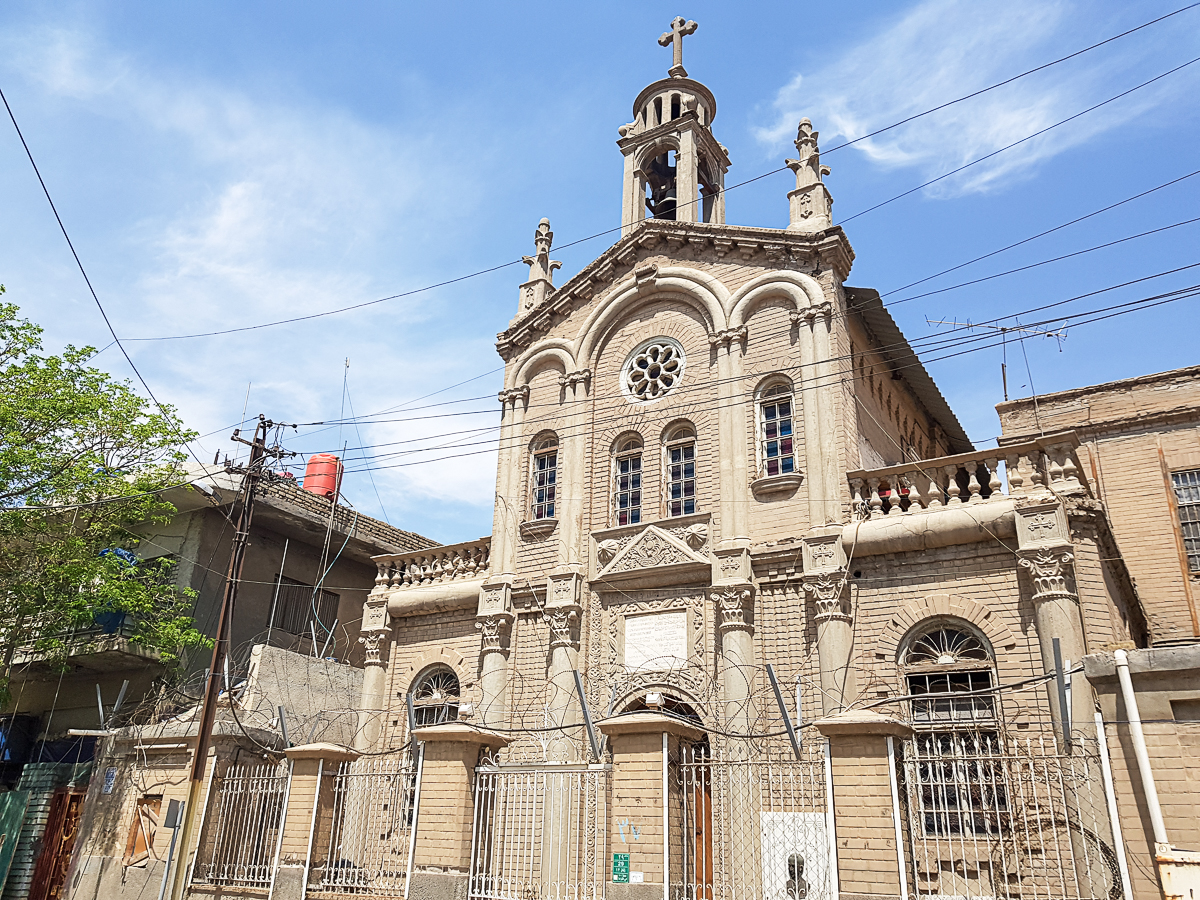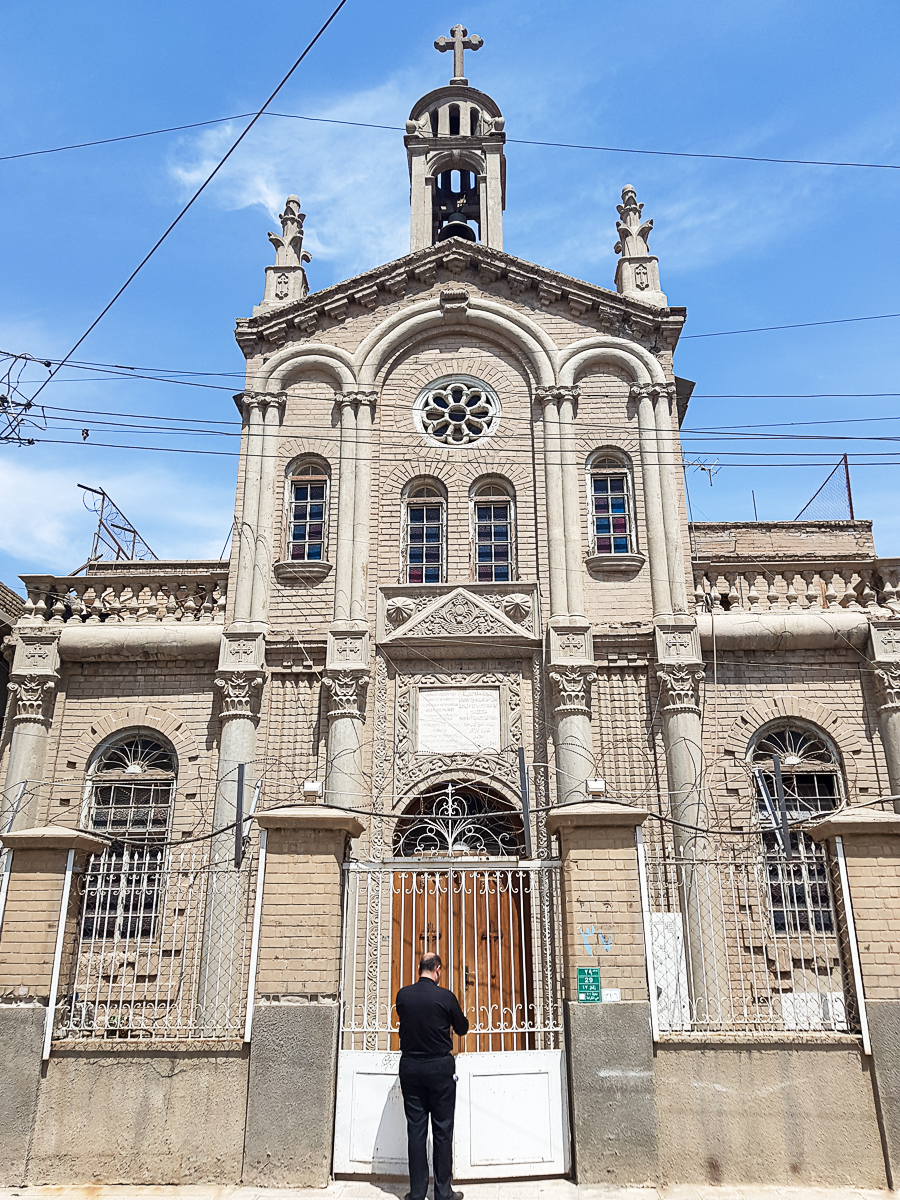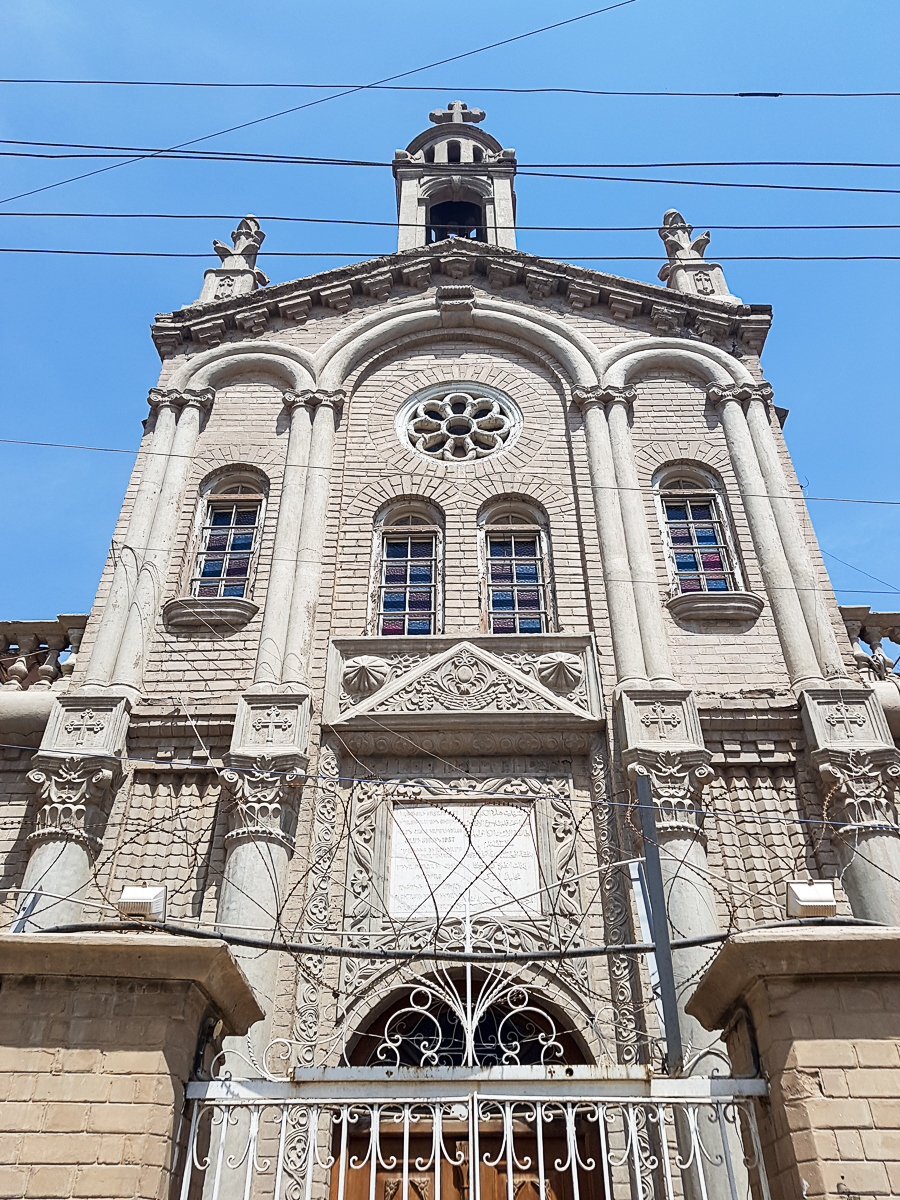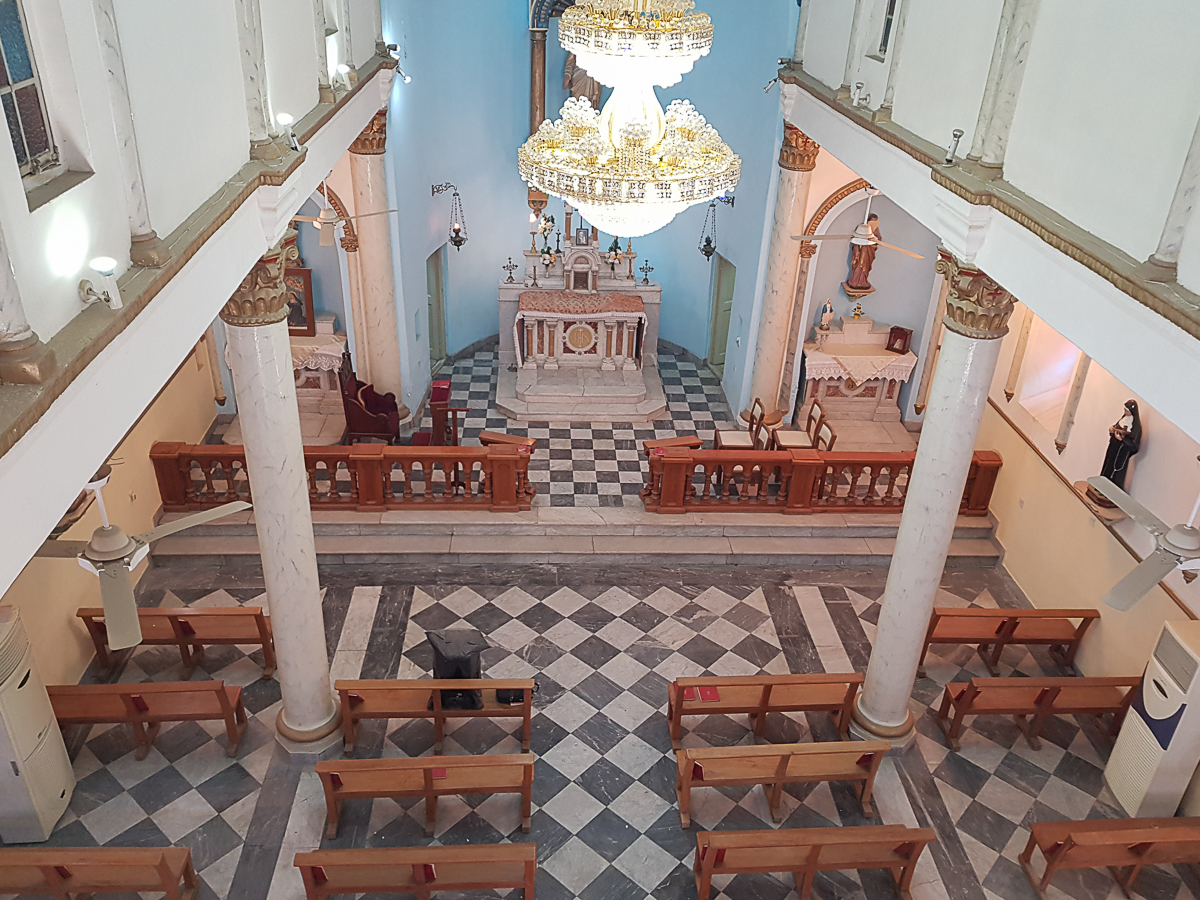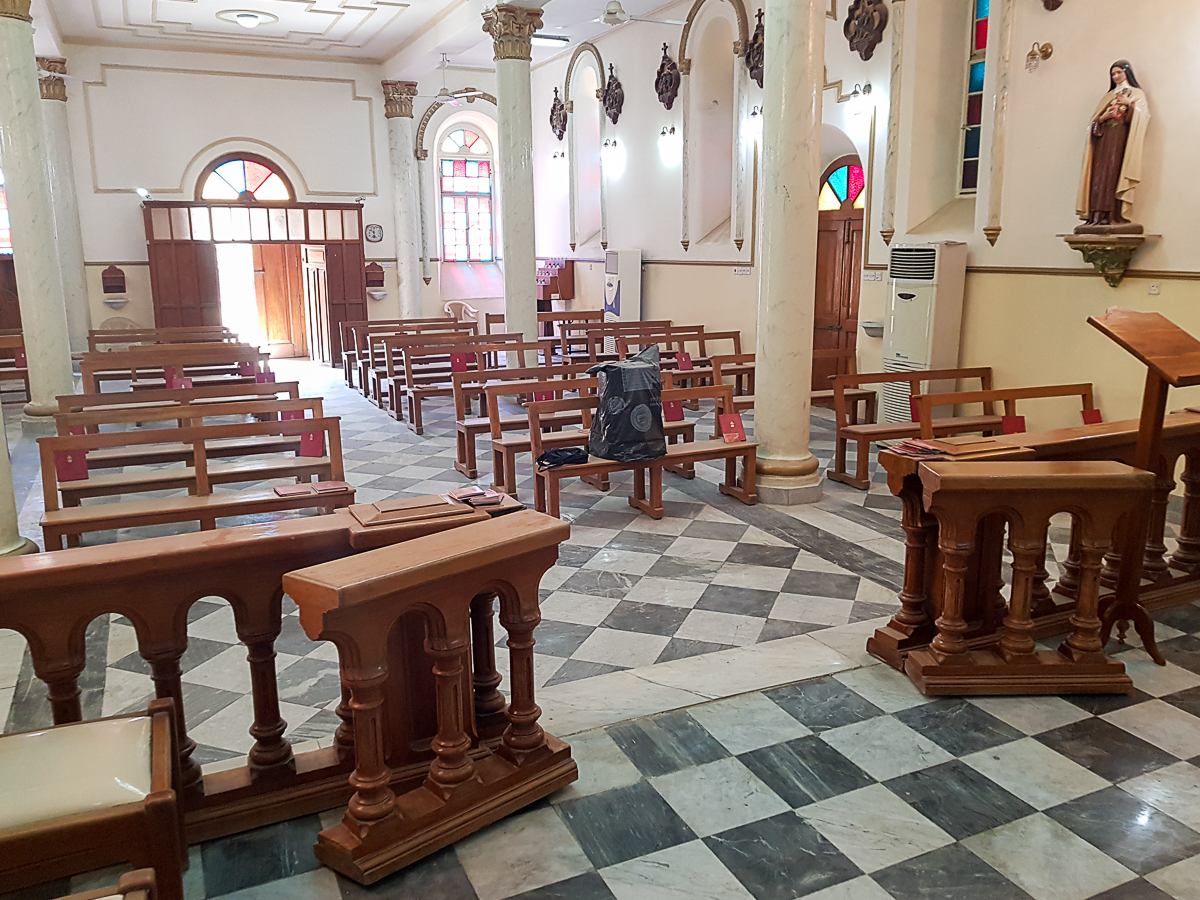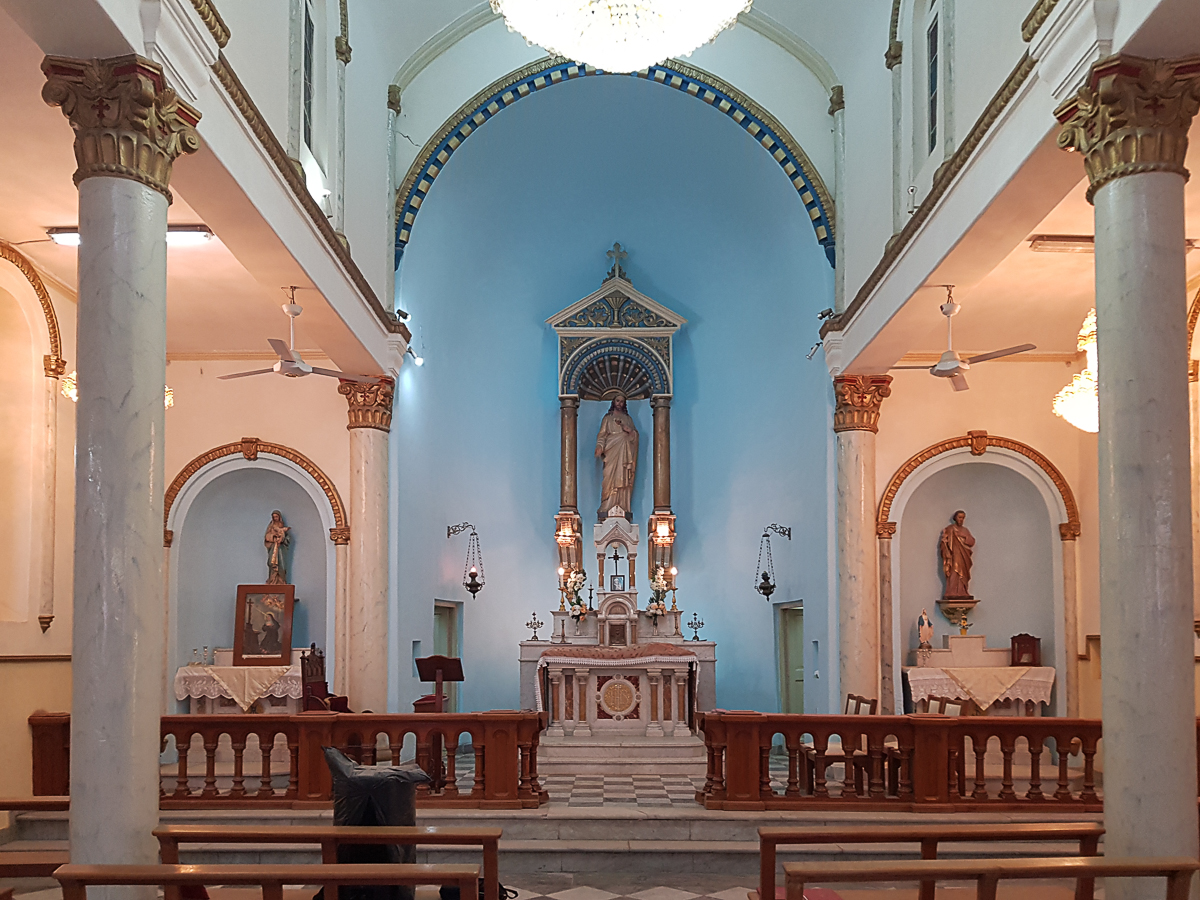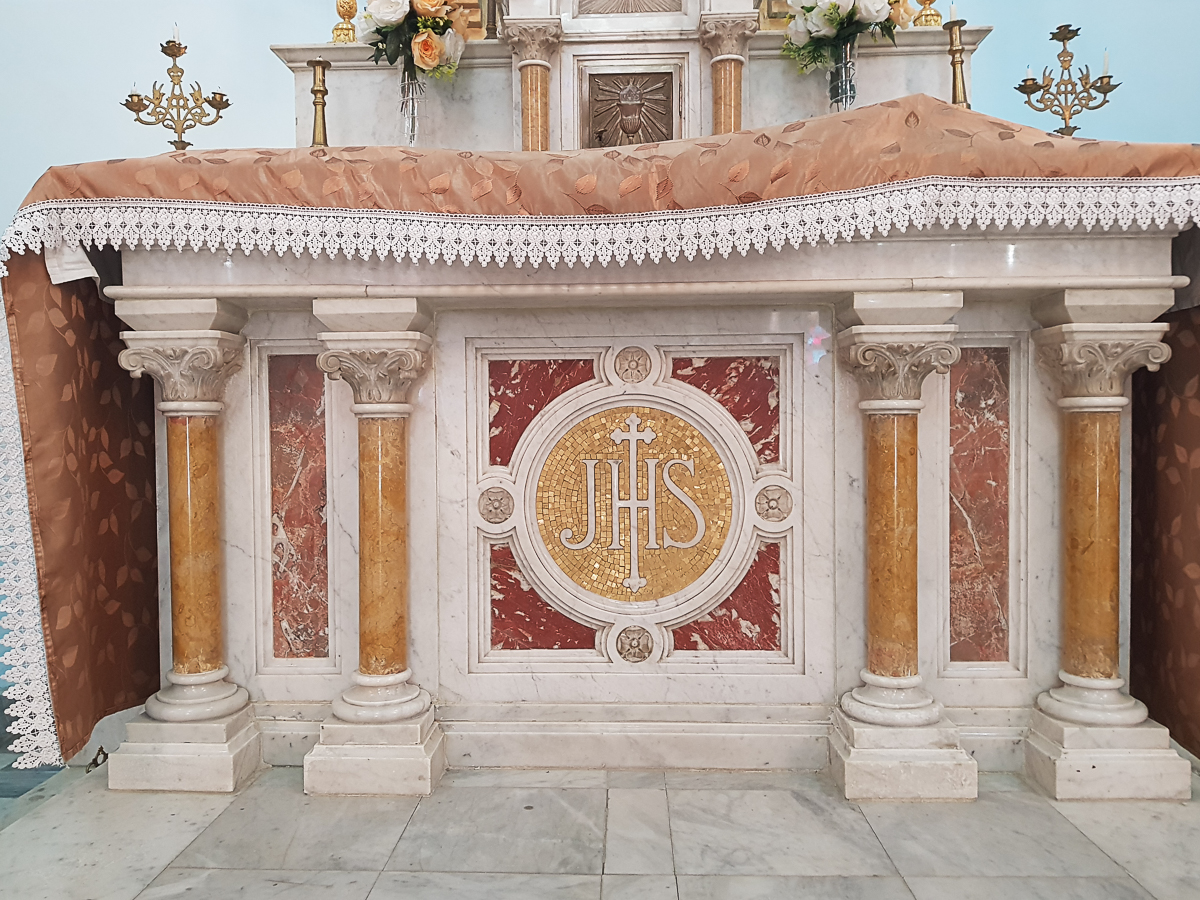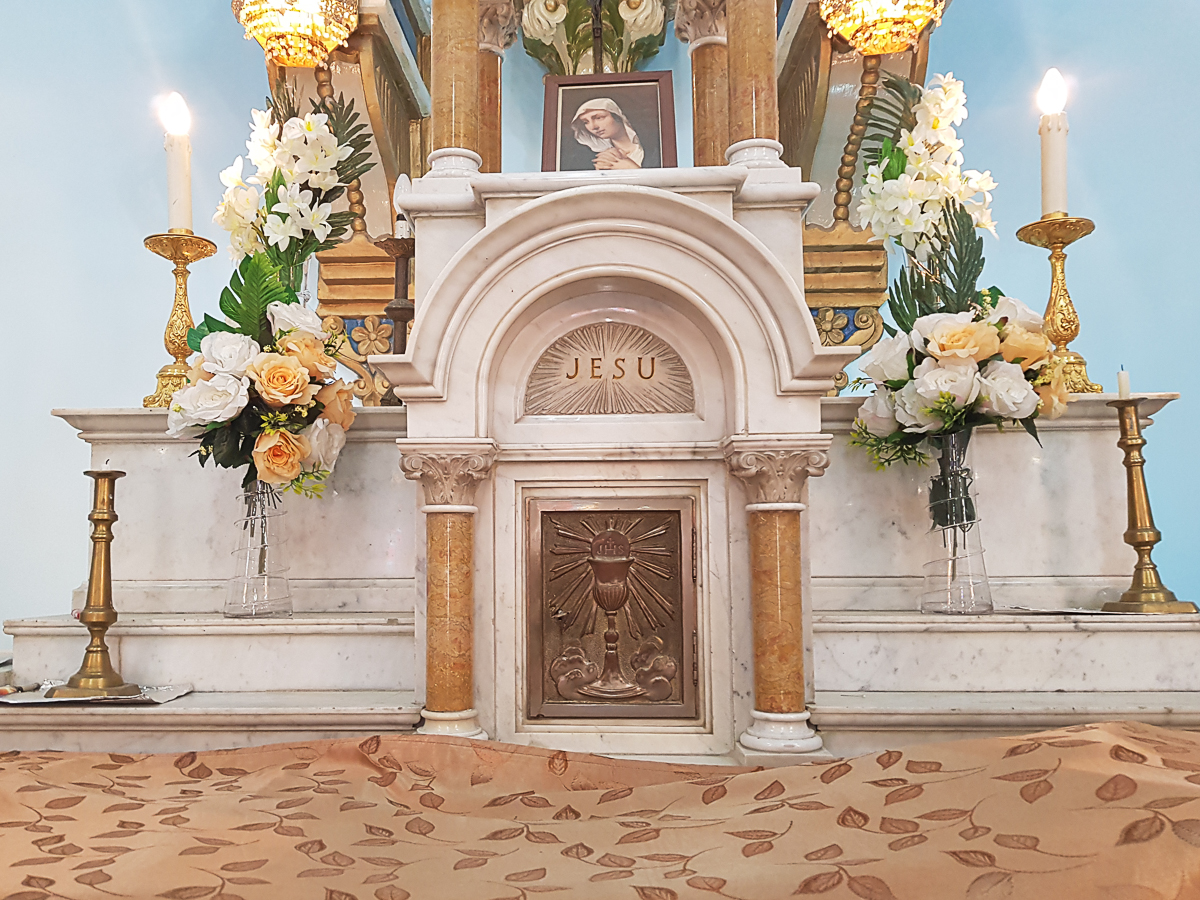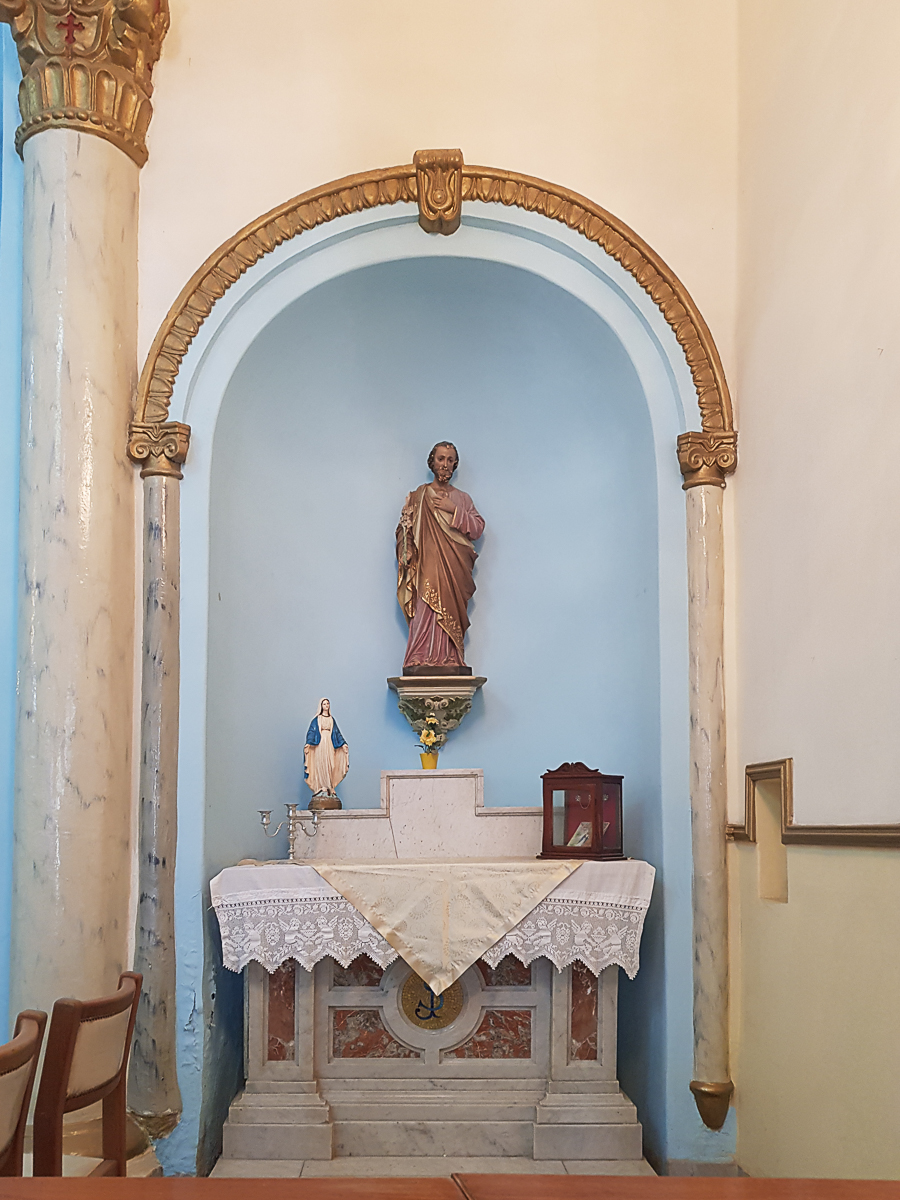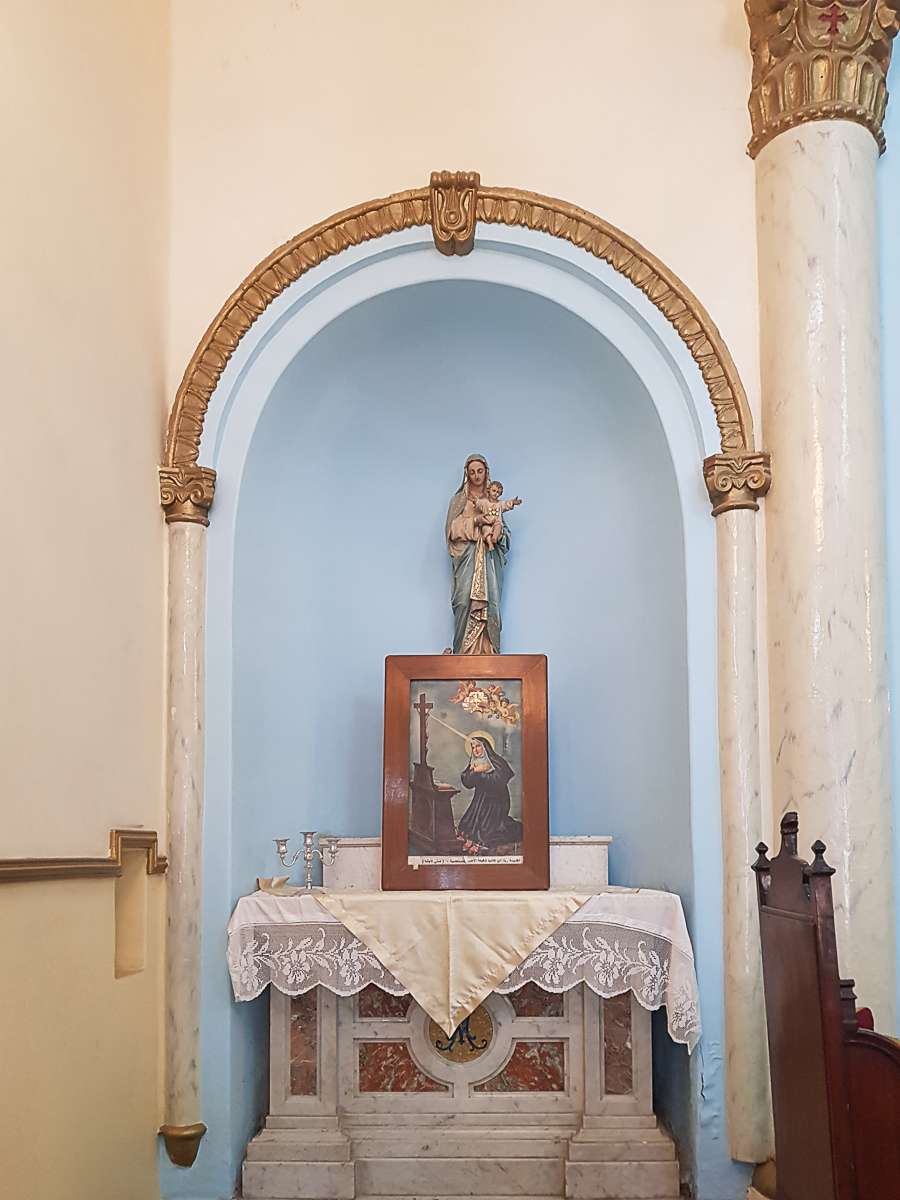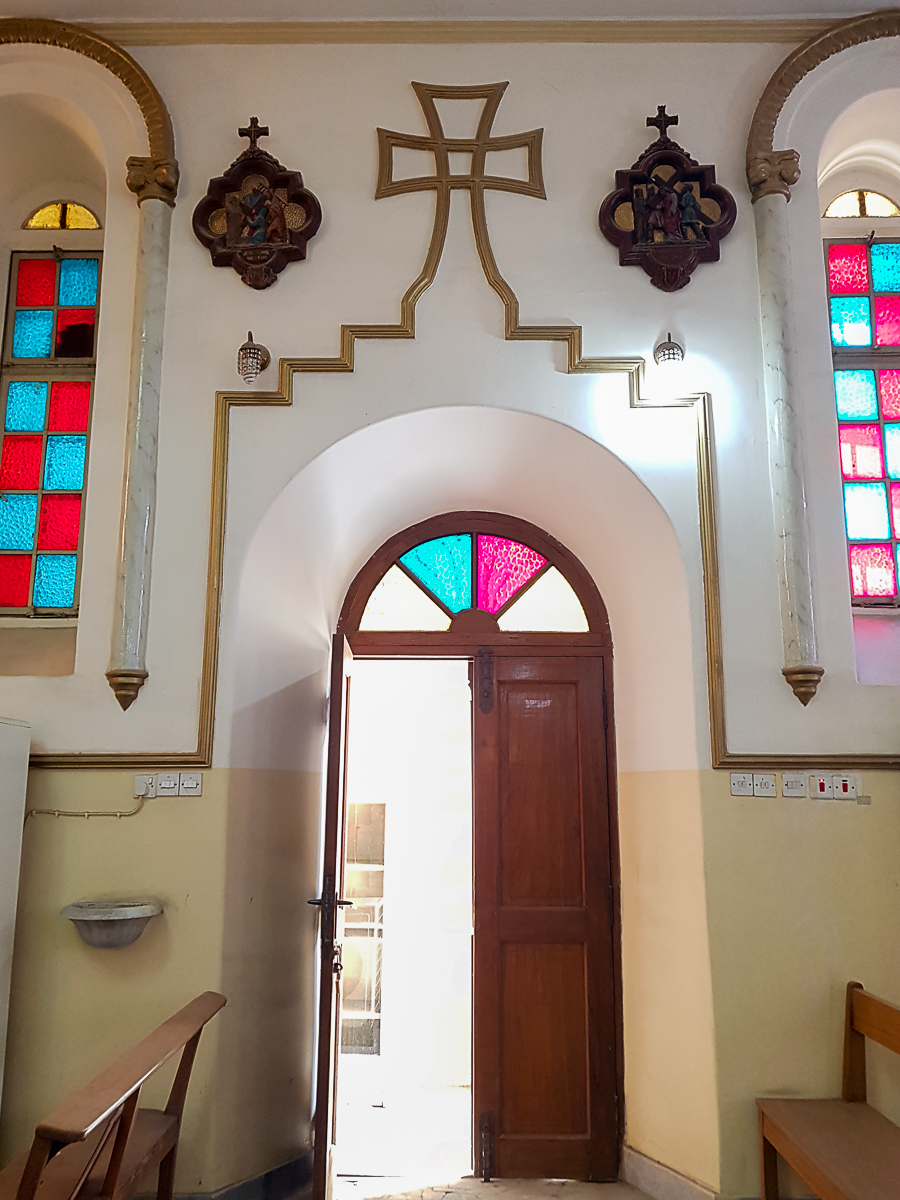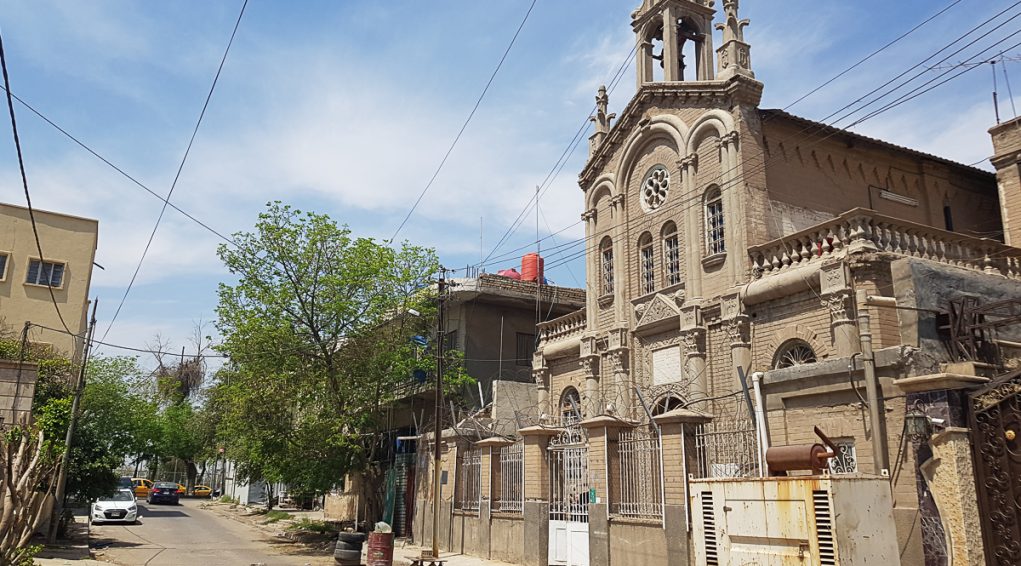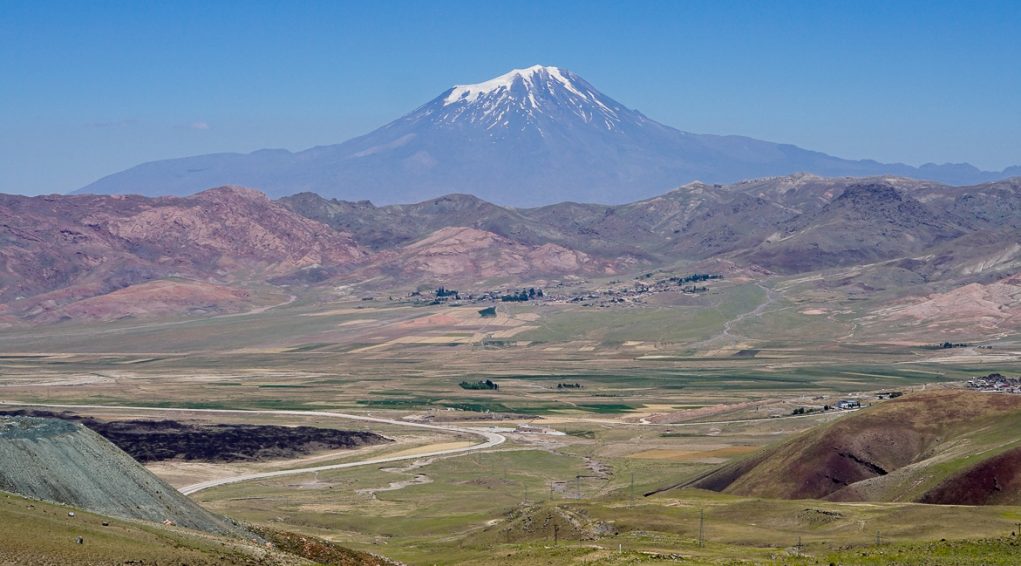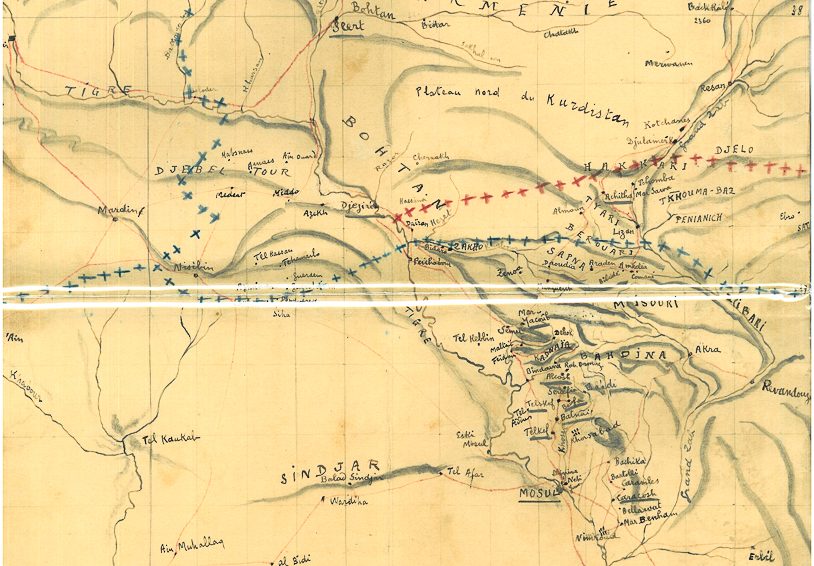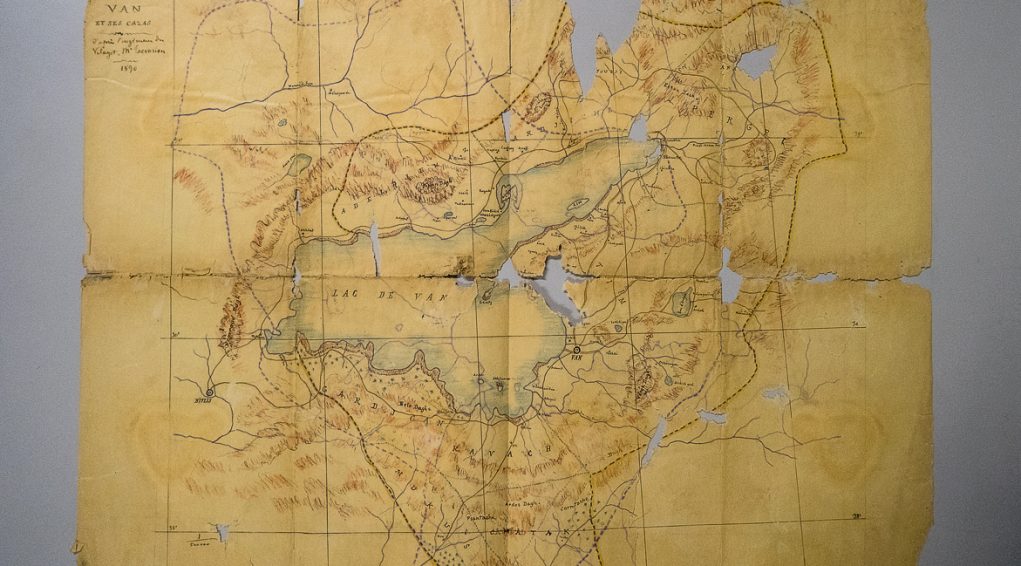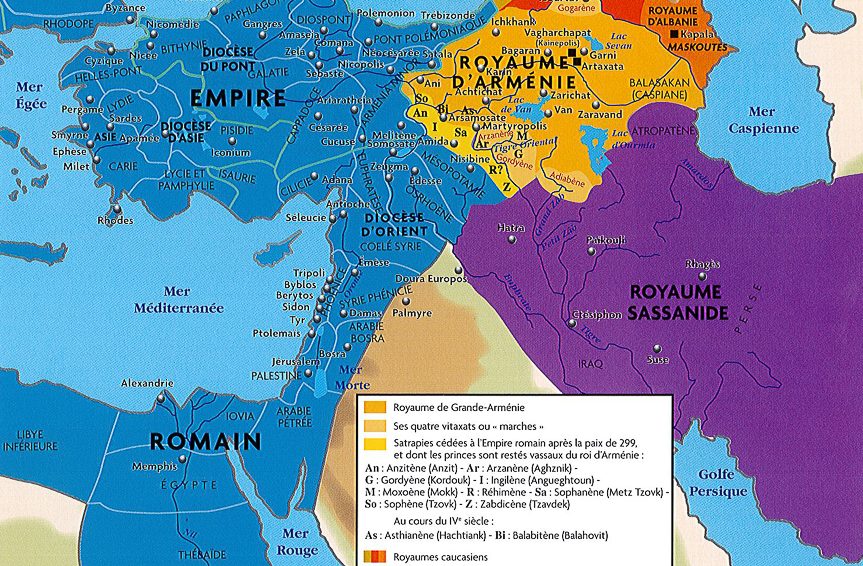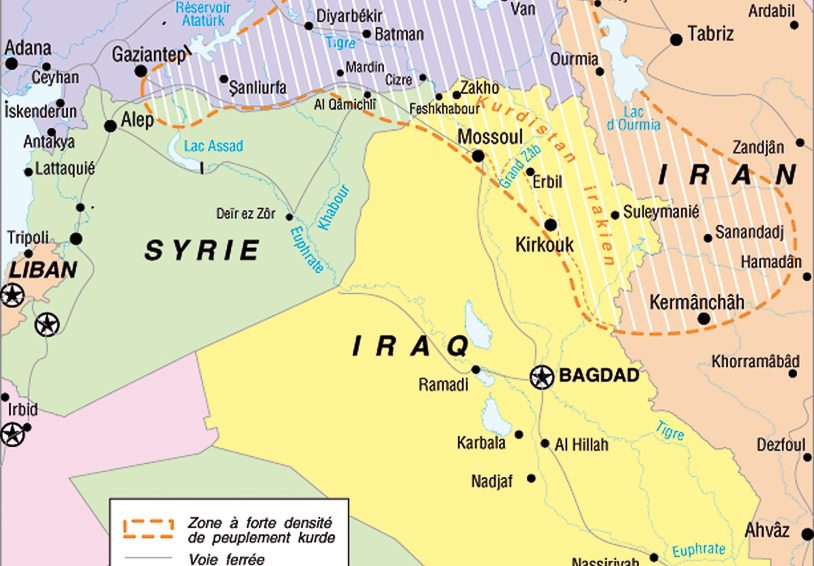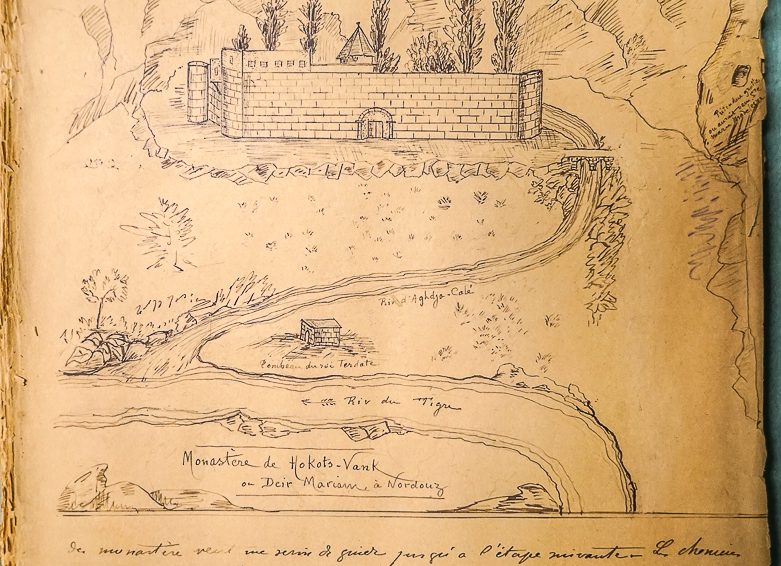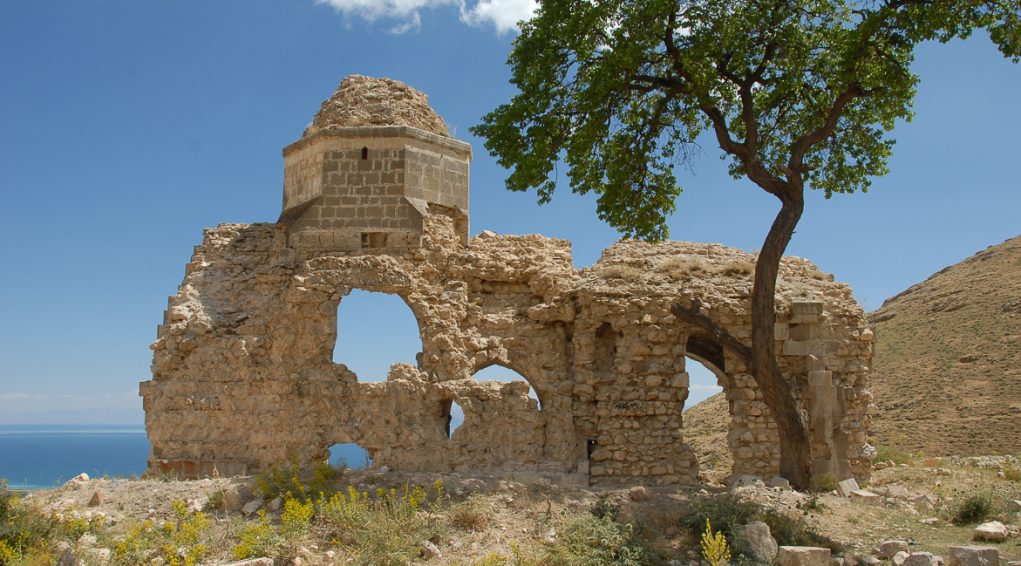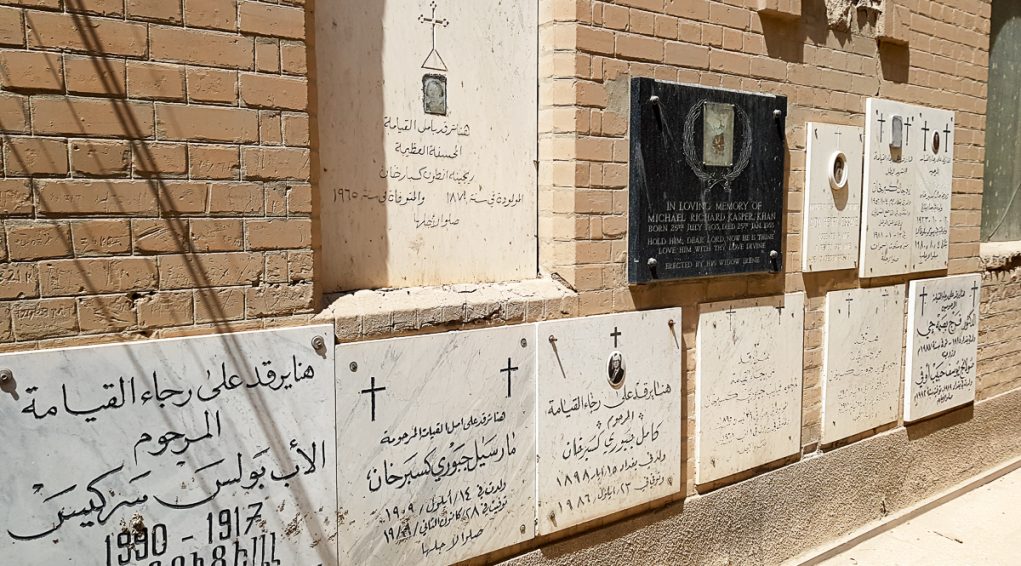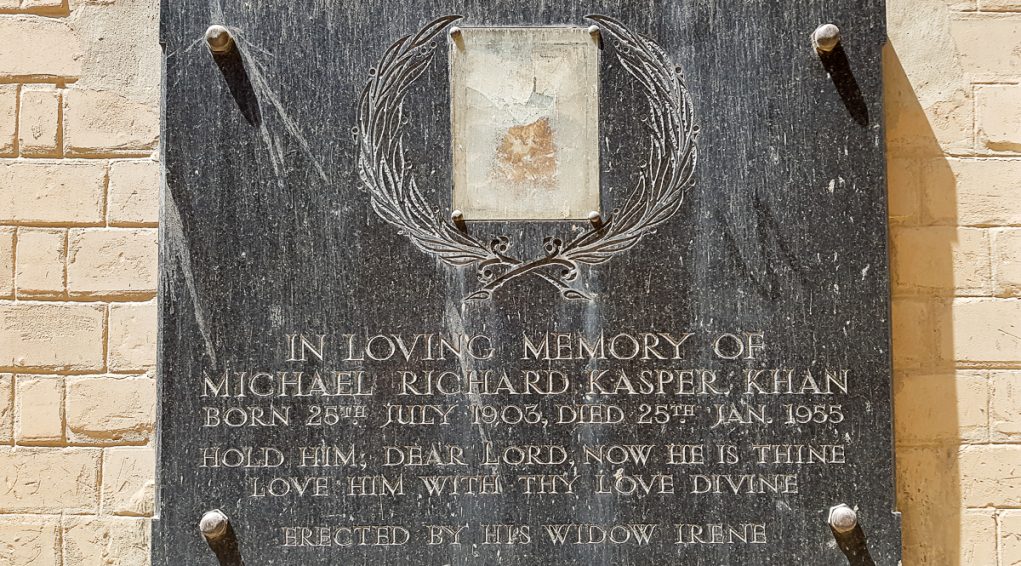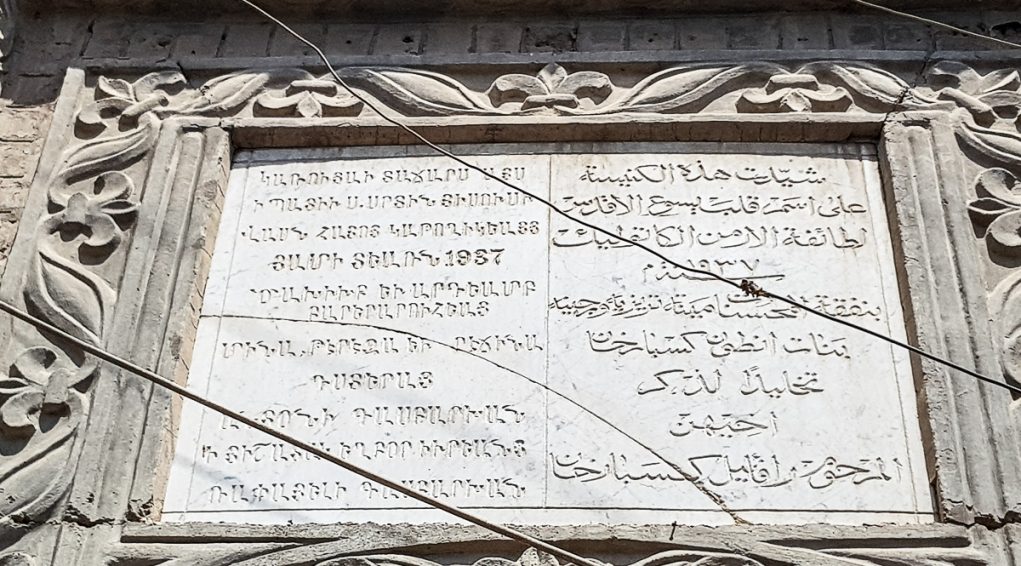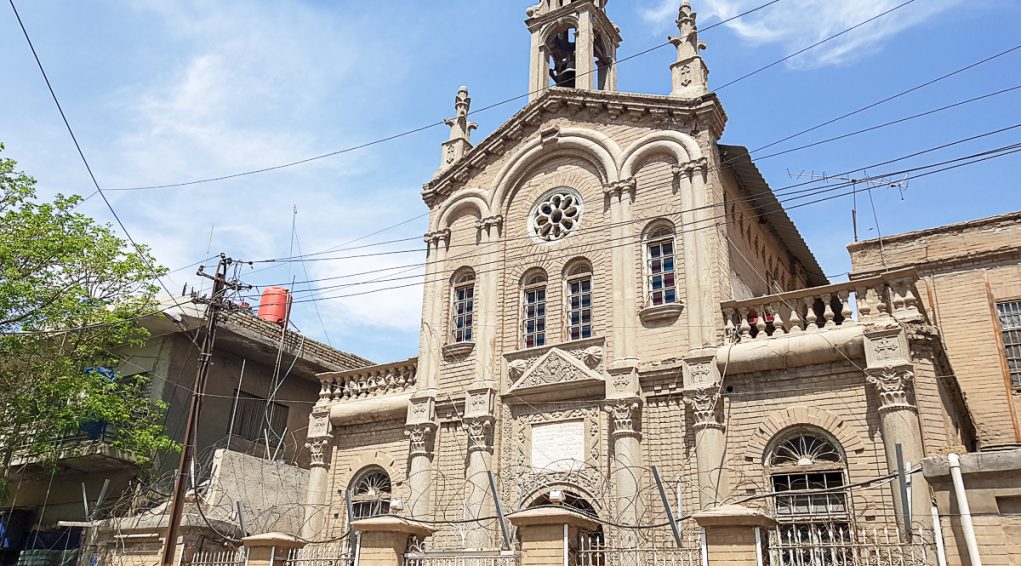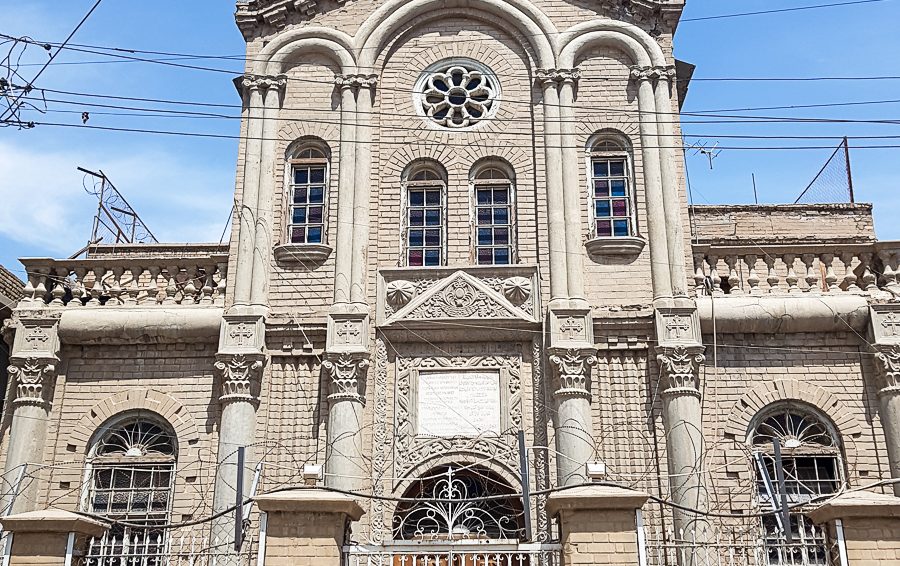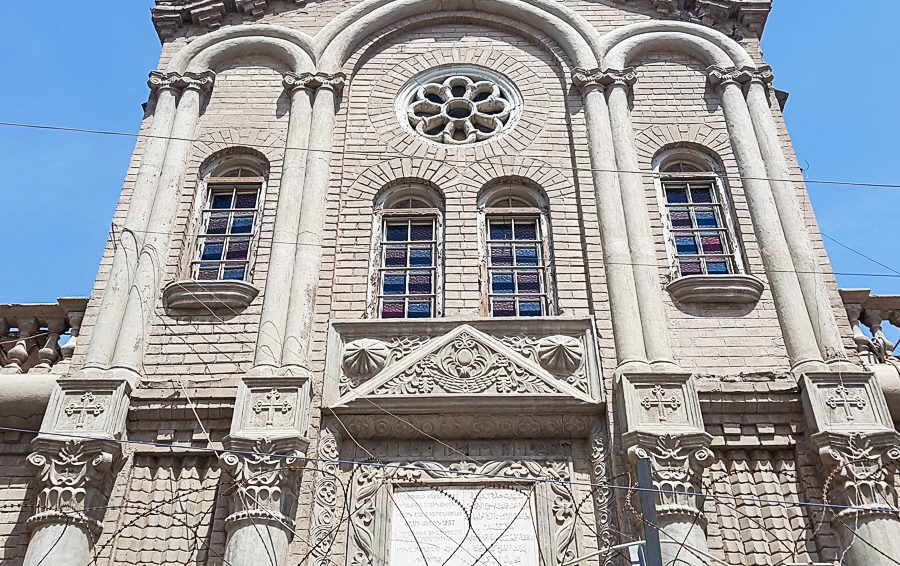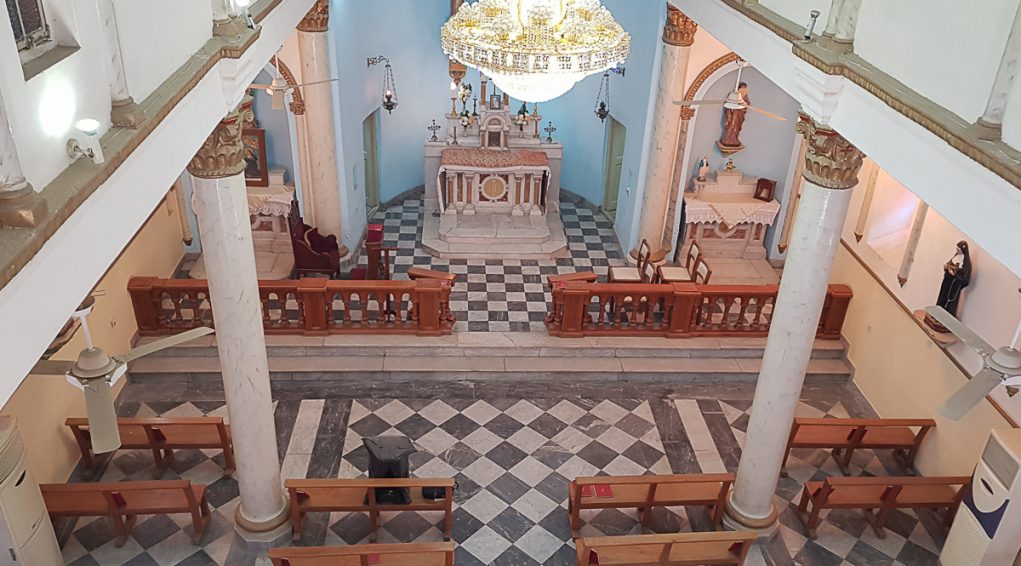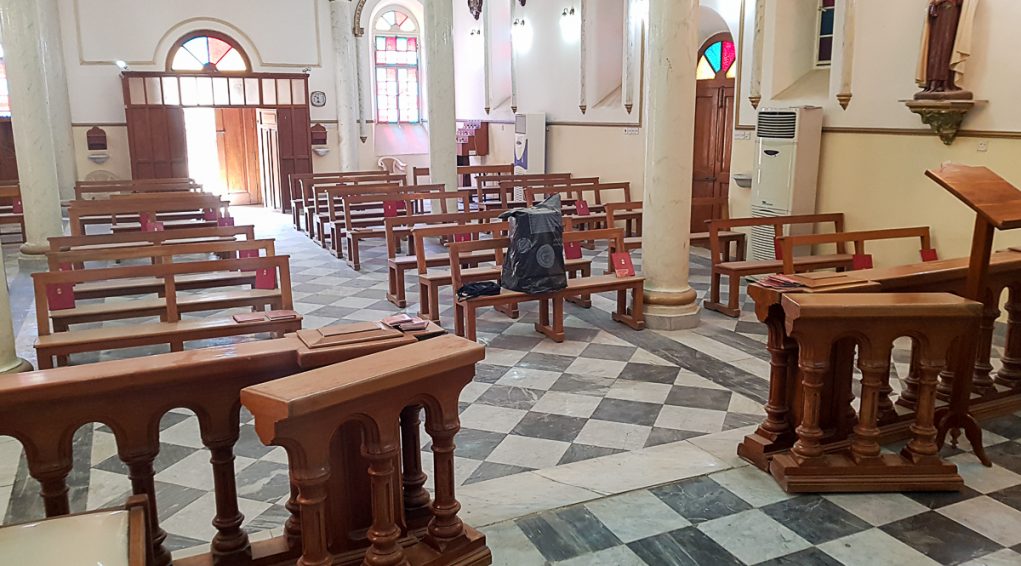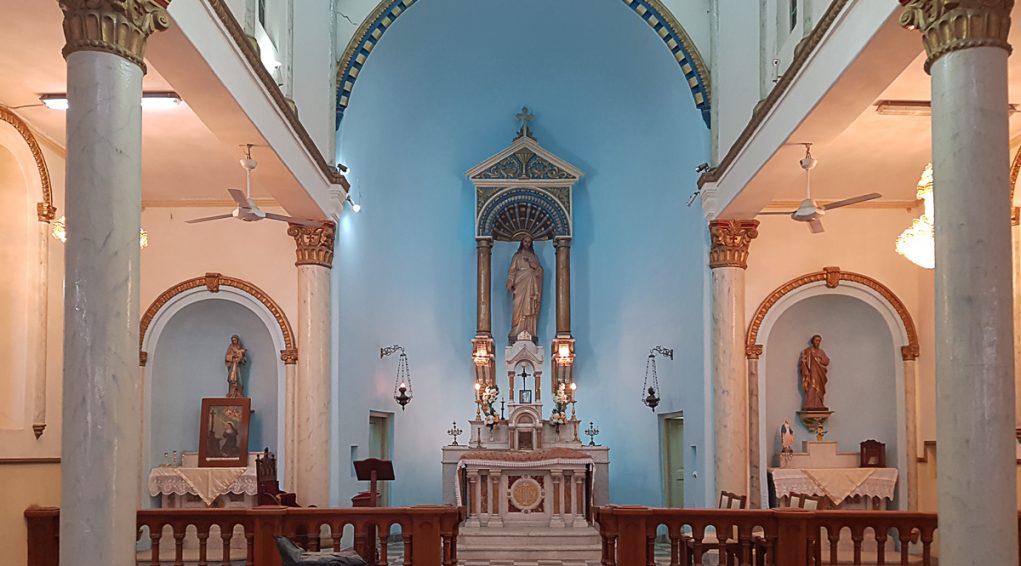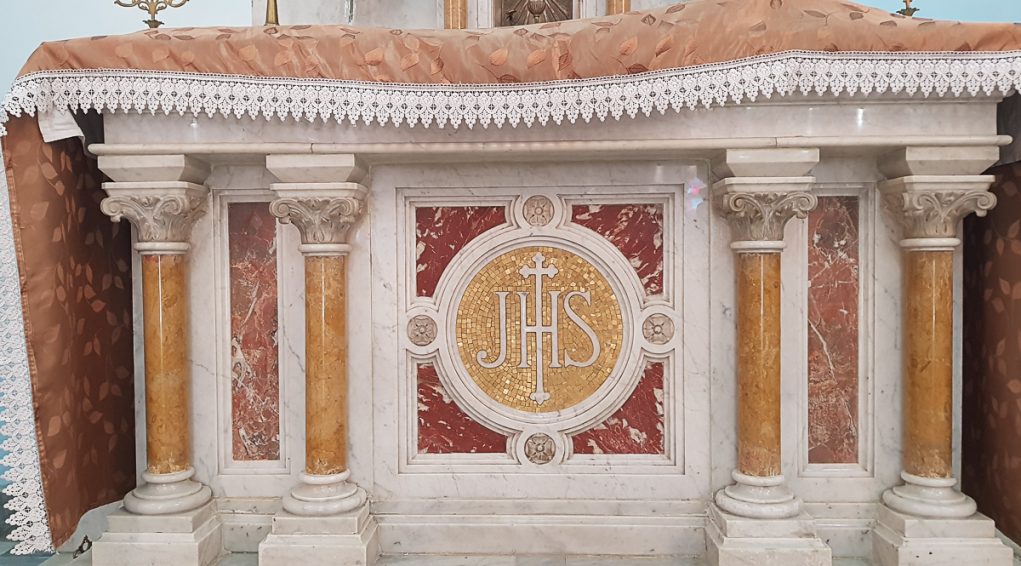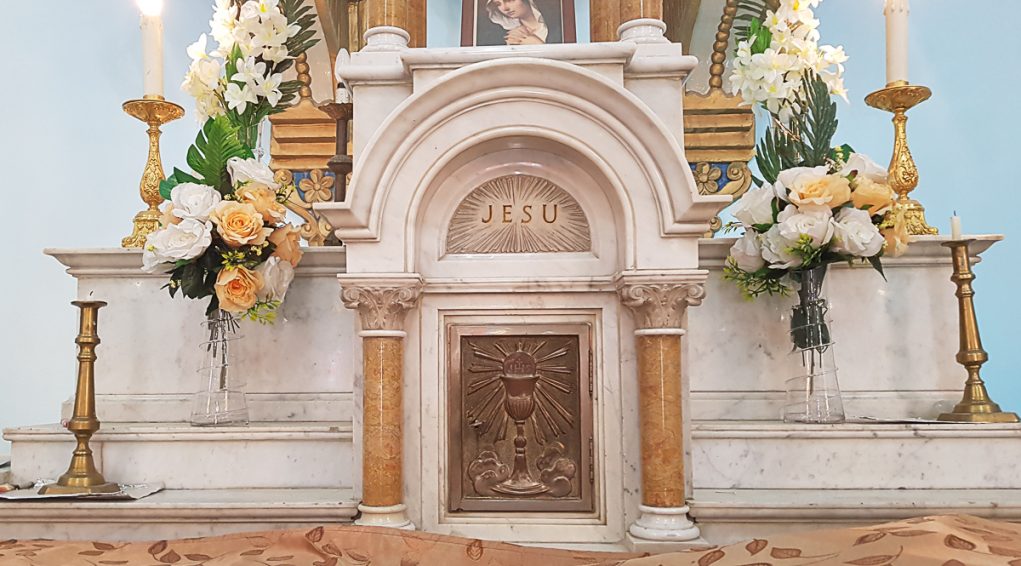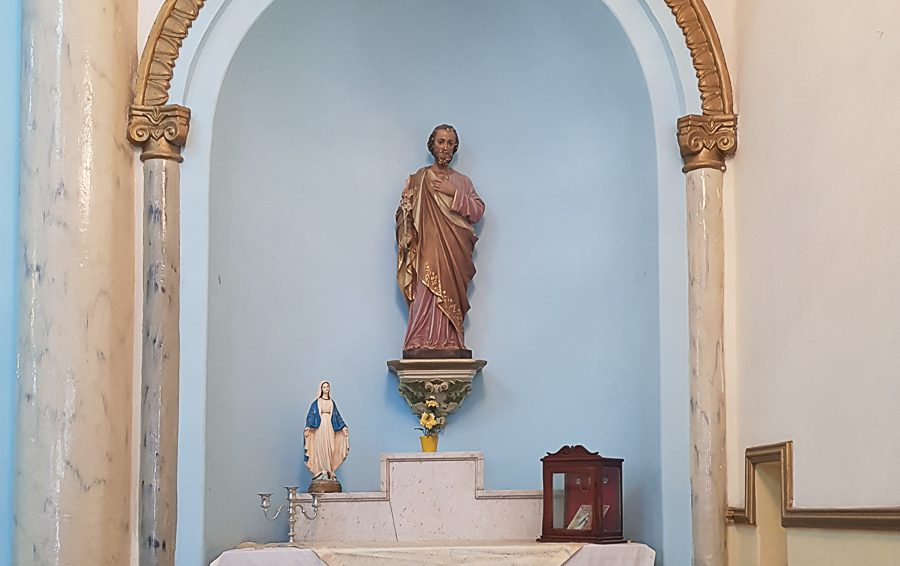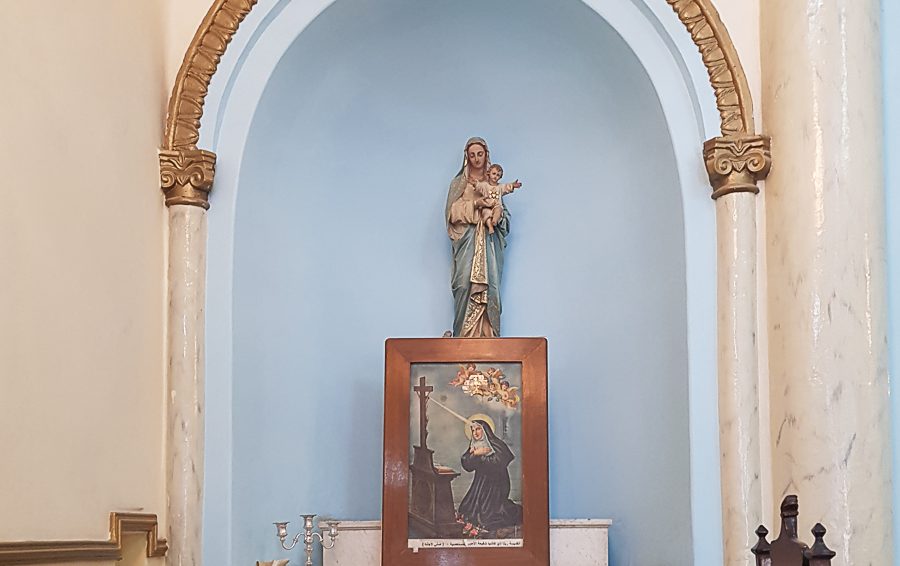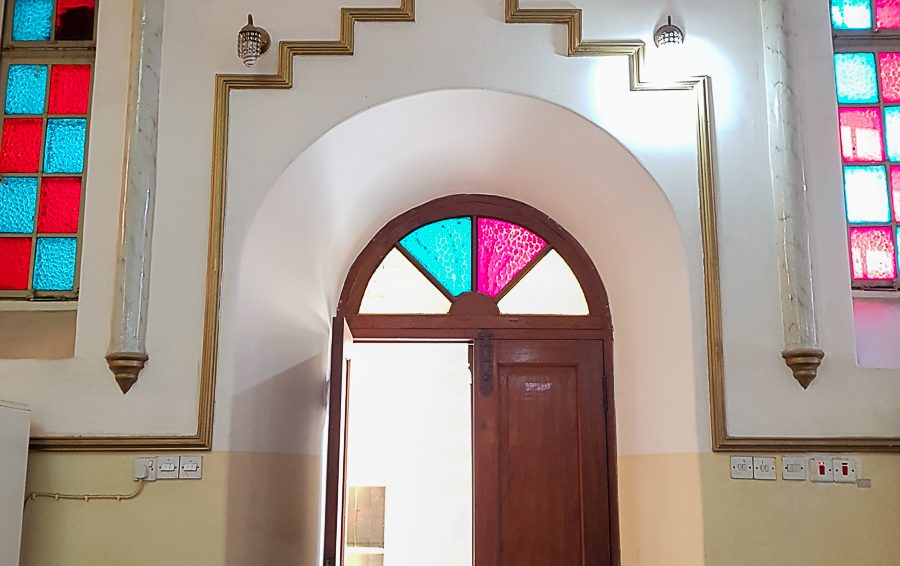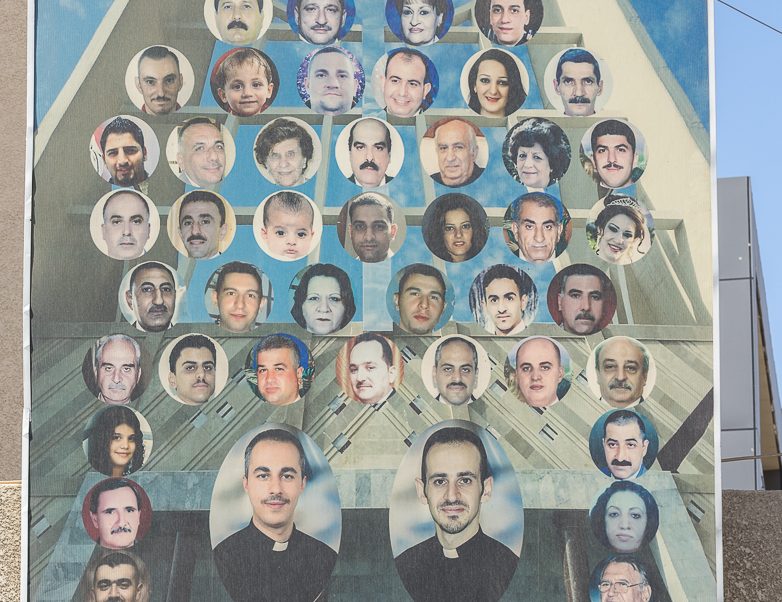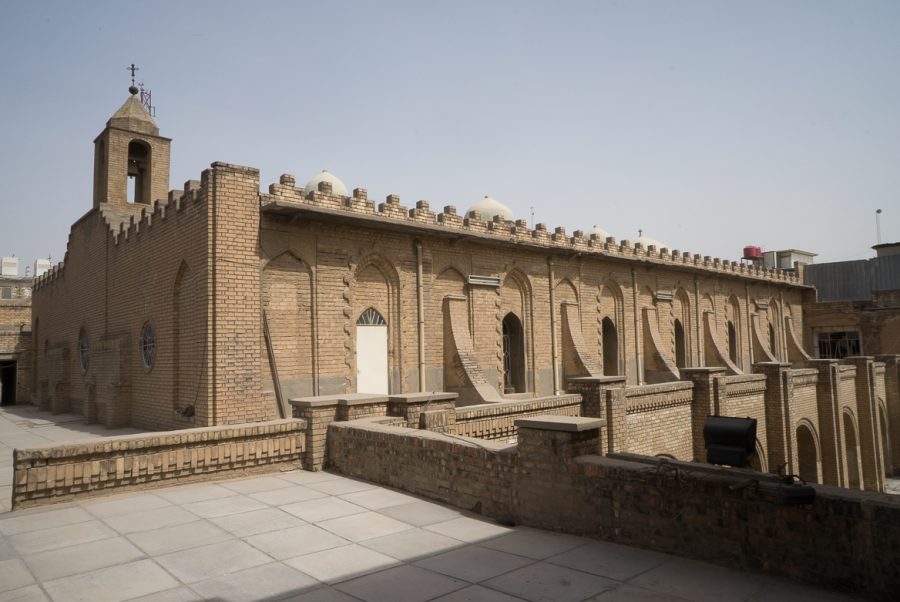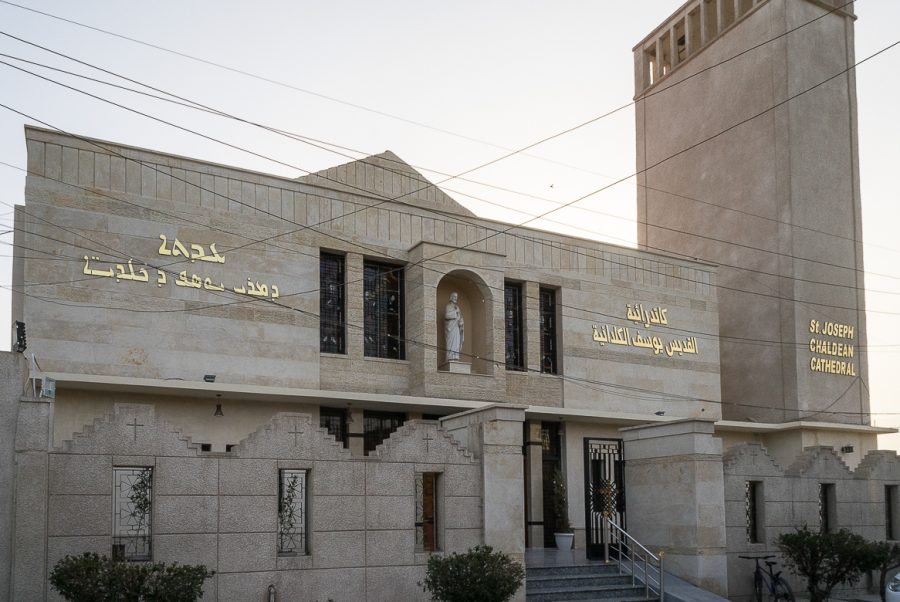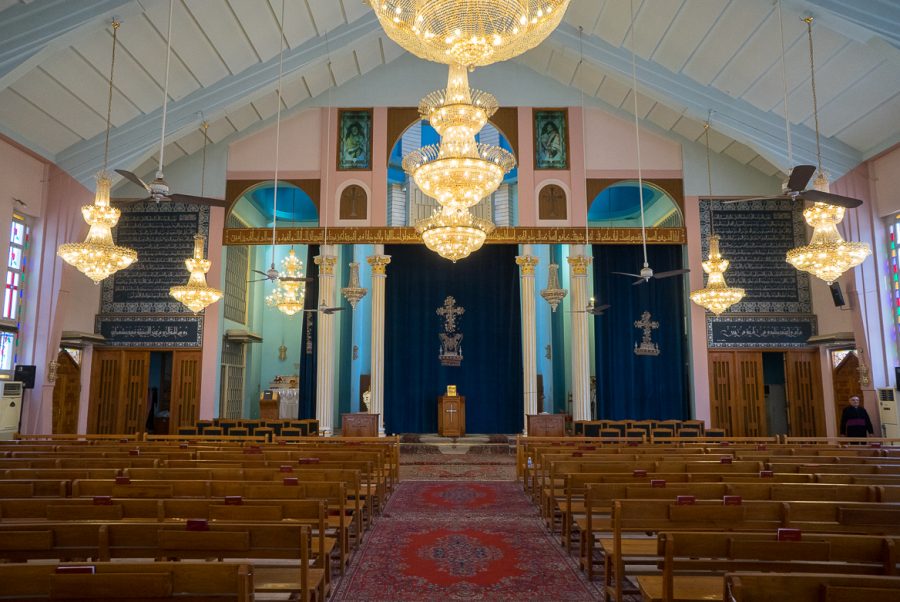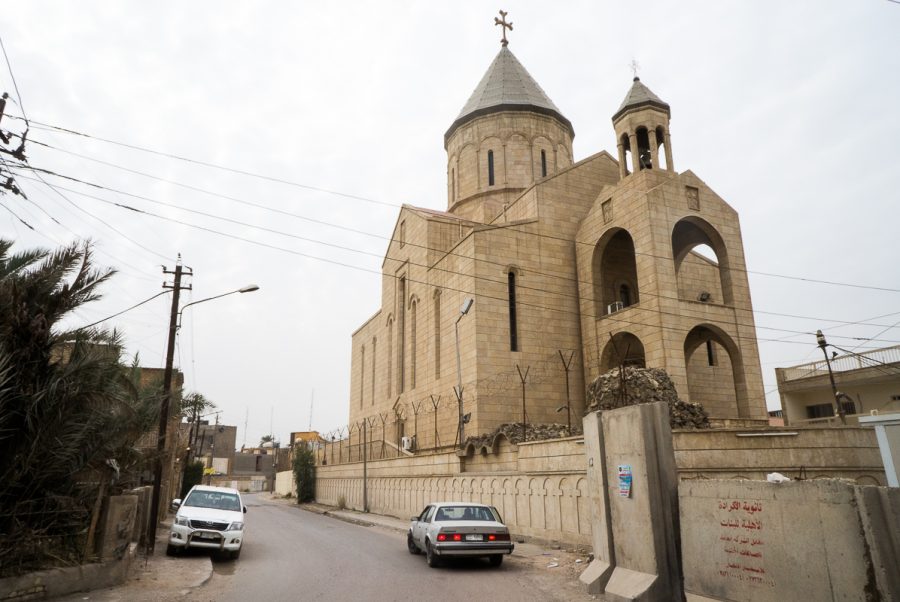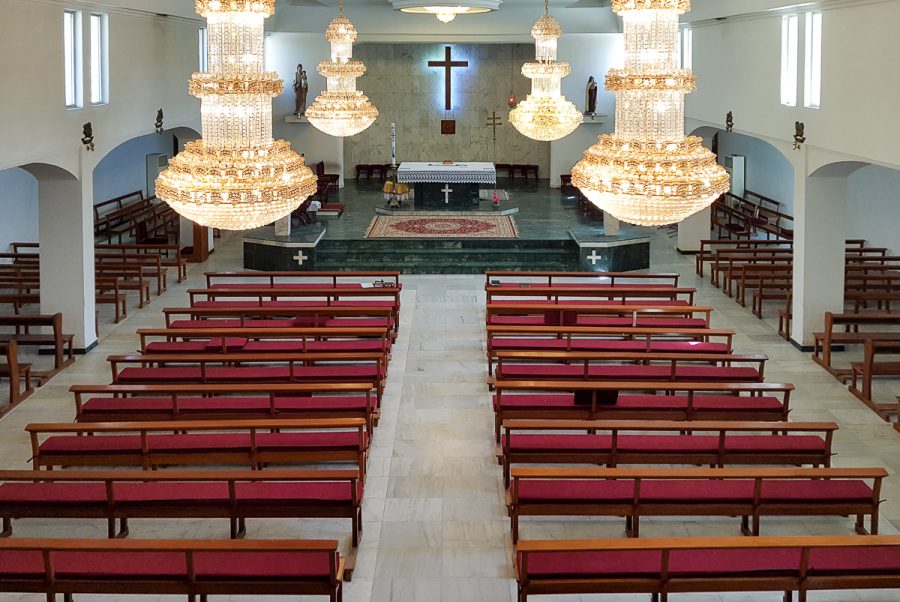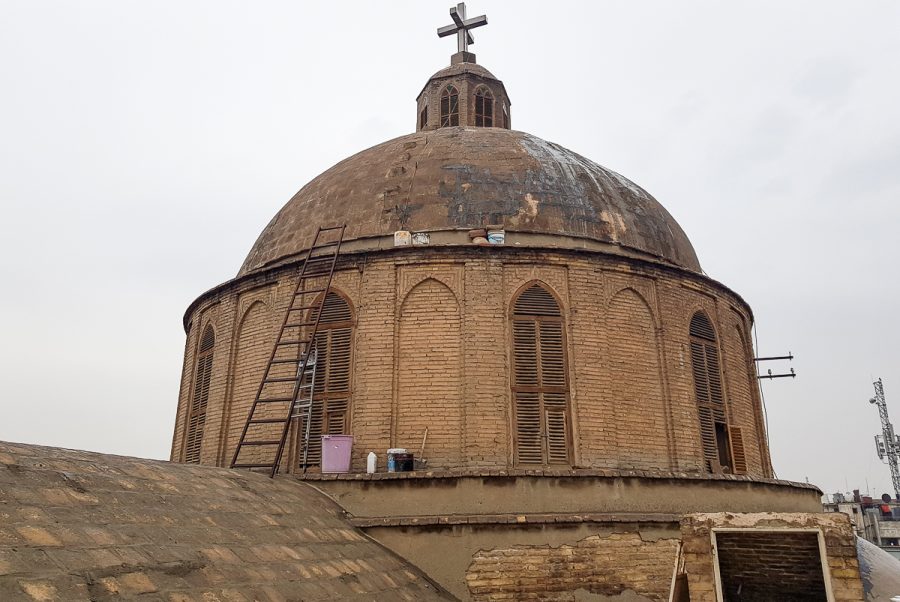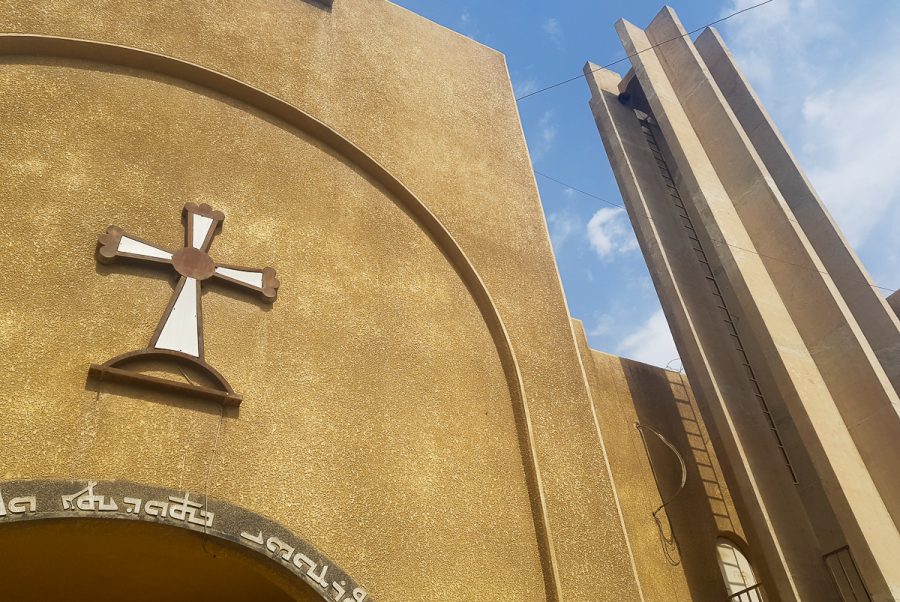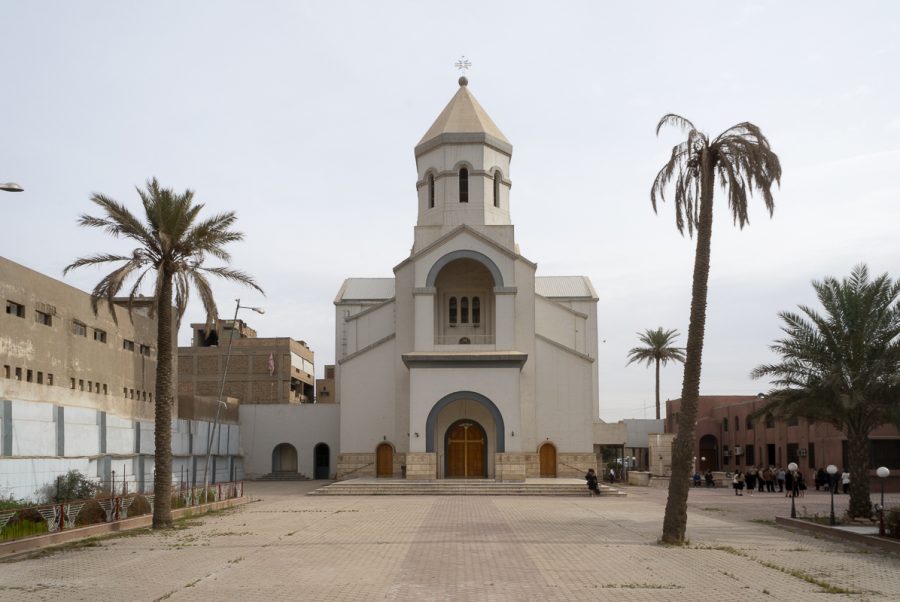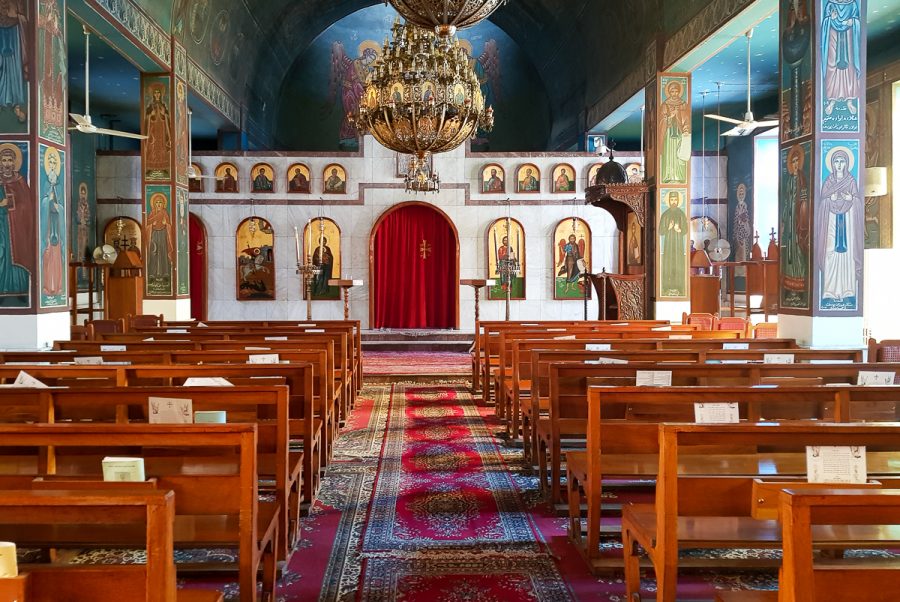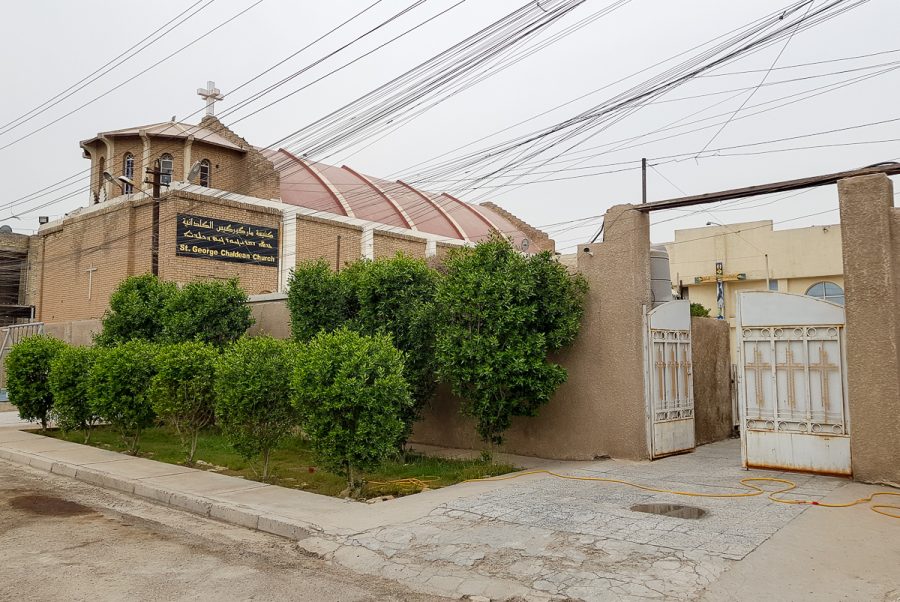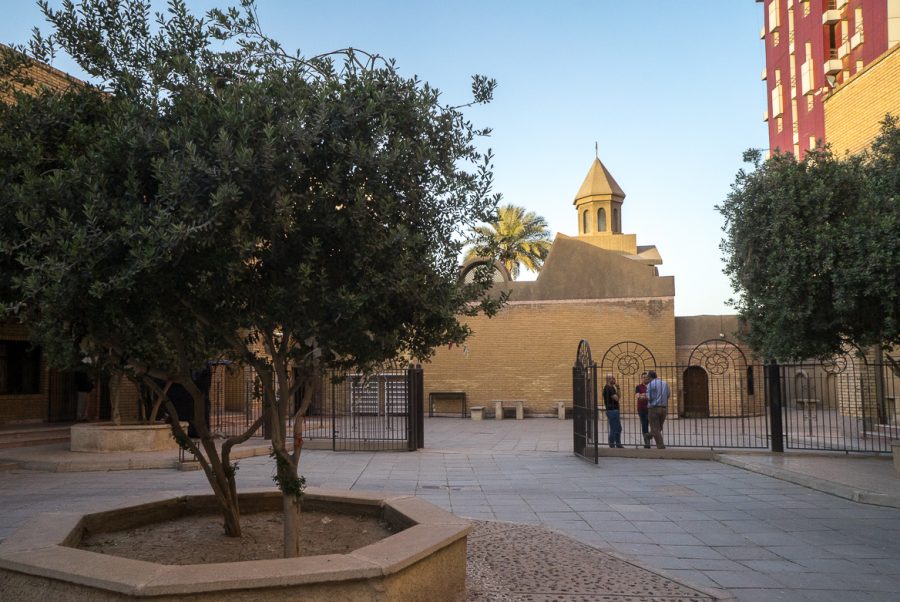The Armenian Catholic church of the Sacred Heart of Jesus in Baghdad
The Armenian Catholic church of the Sacred Heart of Jesus is located at 33°18’17.3″N 44°25’41.7″E and 39 metres altitude in the al Karrada al-sharquiya district of Baghdad, at the crossroads between the Dakhel and Abo Noas streets.
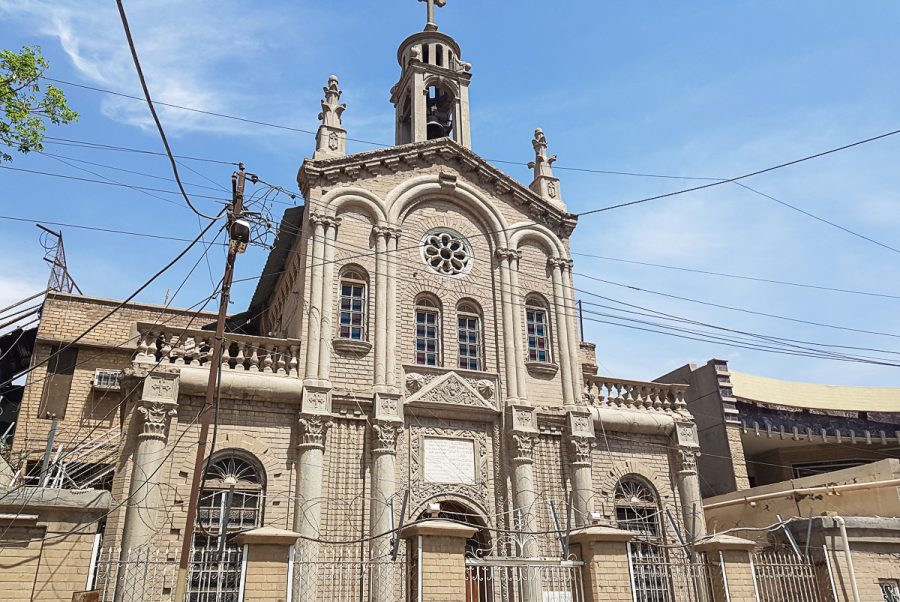
The first stone of the Armenian Catholic church of the Sacred Heart of Jesus in Baghdad was laid in 1937. It was consecrated on 3rd April 1938.
The construction of the church was funded by donations from the sisters Mina, Teresa and Vergina, the daughters of Anton Kasparkhan, in memory of their brother, the late Raphaël Kasparkhan. In 2012, the church celebrated its 75th anniversary.
This building has none of the typical characteristics of traditional sacred Armenian architecture. This is a western-style church with a basilica plan, 22 metres long and 10 metres wide. The use of terracotta bricks as the construction materials evokes its Iraqi Mesopotamian nature. The whole building is impeccably decorated and maintained.
Pic : The Armenian Catholic church of the Sacred Heart of Jesus in Baghdad. Facade. April 2018. © Laith Basil Nalbandian / MESOPOTAMIA
Location
The Armenian Catholic church of the Sacred Heart of Jesus is located at 33°18’17.3″N 44°25’41.7″E and 39 metres altitude in the al Karrada al-sharquiya district of Baghdad, at the crossroads between the Dakhel and Abo Noas streets.
Origins of the Armenian presence in Iraq
The origins of an Armenian presence in Mesopotamia have come along for centuries since Antiquity. In the 1st century BC, the Adiabene kingdom (with Arbeles/Erbil as “capital city”) was part of the Armenian Kingdom of Tigranes II the Great. At the very beginning of the 4th century, the area of Abadiene, which was then the most southern territory of the kingdom of Armenia, became the very first Christian “state” in History, around 301. “There was also probably a meeting in around 328-329 between the only two Christian sovereigns at that time: the Roman Emperor Constantine 1st and the Armenian King Tiridates III. Constantine I confirmed Tiridates III’s role in evangelising the East. This led to the evangelisation of Mesopotamia and the Sassinid kingdom by Armenian missionaries, as related by the Greek historian Sozomen, in around 402: “The belief progressed amongst neighbouring peoples and grew in number, I think the Persians became Christians due to the close relationships they had with the people of Osroene[1] and the Armenians (…)”.[2]
In the 17th century, new Armenian communities settled in Iraqi Mesopotamia after the Persian Shah Abbas I conquered Baghdad in 1623. In the early years of the 17th century, the Persian king forced the Armenian population of Julfa (former Armenian city in the Nakhichevan, on the northern bank of the Aras river) to exile. 12,000 Armenian people were then moved to New Julfa (Nor Djougha), at the gates of Isfahan, to take part in the development of the Safavid-Persian Empire’s new capital city. After Shah Abas died, the Armenians from Persian endured times of troubles. Lots of them moved to Mesopotamia and settled in Basra (south of modern-day Iraq), whereas others set off to India.
When the Ottoman Sultan Murad IV regained control over Baghdad in 1638 with the help of Armenian Ottoman soldiers and a new phase started for an Armenian settling in Baghdad. All along the Ottoman domination’s period and until the fall of the Empire at the beginning of the 20th century, the Armenians developed their institutions so much that by the end of the 19th century they were nearly 90,000 living in Iraq. [3]
The genocide of the Armenians in the Ottoman Empire in 1915-17 was the last and terrible reason of their migration towards Iraqi Mesopotamia. Deported from the eastern provinces of the Empire, coming from the North (Diyarbekir) along the Tigris river, from the West (Ras-al-Ain) along the railway from Aleppo to Baghdad, or also from Van and then coming first through Persia, the Armenians arrived in some relegation areas such as Zakho, Havresk, Avzrok but also Kirkurk, Bakouba and Mosul. At this time a particularly tragic incident took place. In January 1916 over just two nights, 15,000 Armenian deportees living in Mosul and the surrounding area were exterminated, tied together in groups of ten and thrown into the Tigris river. Already, well before this carnage, on 10th June 1915, the German consul to Mosul, Holstein, telegraphed his Ambassador, reporting telling scenes
“614 Armenians (men, women and children) expulsed from Diarbekyr and transported to Mosul, were all killed en route, as they were transported by raft (on the Tigris). The kelek arrived empty yesterday. For a few days now the river has been carrying corpses and human limbs (…)” [4]
Nowadays, the Armenians in Iraq mostly descend from people who survived the 1915 genocide. Rather discreet on the political scene, they were known for being loyal and developed their own educational, social and religious infrastructure.
From a religious point of view, the Armenians from Iraq are mostly members of the Armenian Apostolic Church (autocephalous church since its origin in 301), some are members of the Catholic community and some others joined a small evangelic community.
After Saddam Hussein’s regime fell in 2003, the situation worsened considerably. The attacks from Islamic and Mafia groups against Iraqi Christians also targeted the Armenians and their churches. On August 1st 2004, the Armenian Catholic church Our Lady of the Rosary, in Baghdad, Karada district, was struck by a bomb attack. An Armenian church under construction was also targeted on December 4th 2004. For nearly 20 years, these successive spates of violence set the tempo for Iraqi Armenians’ mass exodus. The battle of Mosul over the summer 2017 and the bombing intensity also affected the Armenian heritage. Before 2003, there were probably more than 25,000 Armenians in Iraq, whereas today the community leaders assert there are 10,000 to 13,000 Armenians still living in Iraq. Half of them are said to be living in Baghdad. The remainder live in Iraqi Kurdistan, Kirkuk, Sulaymaniyah, as well as Basra. There are no more Armenians in Mosul.
_______
[1] The people of Osroene were the inhabitants of Edessa. Edessa was a major capital city in ancient times, before becoming a powerhouse of Christianity during its infancy. Armenian tradition recounts that the King of Edessa and Armenia, Abgar V, wanted to welcome Christ to his Kingdom and issued an invitation. It was not Christ who came to Edessa but one of his apostles Thaddeus (Jude). Edessa was renamed Urfa and remained the capital of the principality. This city has been known as Şanlıurfa since 1984 (in Turkey).
[2] In “Arménie, un atlas historique”, p.22 and map p.23. Publisher Sources d’Arménie, 2017.
[3] Source: Armenian Embassy in Iraq
[4] In “L’extermination des déportés arméniens ottomans dans les camps de concentration de Syrie-Mésopotamie”. Special edition of Revue d’Histoire Arménienne Contemporaine, Tome II, 1998. Raymond H.Kevorkian. p.15
The Armenian Catholic in Iraq: demographics and organisation
In 1914, there were 300 Armenian Catholics in Iraq. Between the end of the first world war and the fall of the Baathist regime in 2003, the Armenian Catholic community had grown to 3,000 members[1]. Since this time numbers have dwindled due to the poor security situation and anti-Christian persecution. In 2012, there were 1,650 baptised Armenian Catholics in Iraq (Baghdad)[2].
The Armenian Catholic archdiocese of Baghdad was founded on 29th June 1954 when there were several thousand Armenian Catholics living in Iraq. The archdiocese is governed by the Armenian Catholic Patriarchate of Cilicia, the seat of which is in Bzoummar in Lebanon.
The Armenian Catholic church in Iraq has two churches in Baghdad: the cathedral Our Lady of Narek (Our Lady of the Rosary) and the former cathedral of the Sacred Heart of Jesus.
The position of Primate of the Armenian Catholics in Iraq has been vacant since the death of Archbishop Emmanuel Dabbaghian, on 13th September 2018.
________
[1] Source: Armenian Embassy in Iraq
[2] Source: http://boowiki.info/art/dioceses-catholiques-en-irak/archieparchie-de-bagdad-des-armeniens.html#goto-2
History of the Armenian Catholic church of the Sacred Heart of Jesus in Baghdad.
We know that there was a primitive Armenian Catholic church in Baghdad from 1844 onwards.
The first stone of the Armenian Catholic church of the Sacred Heart of Jesus in Baghdad was laid in 1937. It was consecrated by the bishop Louis Batanyan on 3rd April 1938.
The construction of the church was funded by donations from the sisters Mina, Teresa and Vergina, the daughters of Anton Kasparkhan, in memory of their brother, the late Raphaël Kasparkhan.
Numerous feast days and celebrations have been held in this church. In 2012, the church celebrated its 75th anniversary. With its long, rich history and a wealth of heritage, the Armenian Catholic church of the Sacred Heart of Jesus is still active, despite the fact that the cathedral Our Lady of Narek (Our Lady of the Rosary) built nearby is more commonly used since its consecration in 1998.
Every Friday morning, mass is celebrated at the Armenian Catholic church of the Sacred Heart of Jesus. Pastoral activities are organised here to keep the church in use.
Description of the Armenian Catholic church of the Sacred Heart of Jesus in Baghdad.
The Armenian Catholic church of the Sacred Heart of Jesus was built by the engineer and designer Joseph bn Sirop Cécliyan (vérifier le nom).
This building has none of the typical characteristics of traditional sacred Armenian architecture. This is a western-style church with a basilica plan, 22 metres long and 10 metres wide. The use of terracotta bricks as the construction materials evokes its Iraqi Mesopotamian nature.
Narrow and elongated, the Armenian Catholic church of the Sacred Heart of Jesus has a beautiful facade composed of two-levels of columns and capitals, decorated with bas-reliefs of trefoil crosses. The doors and windows are semi-circular arches. Above the entrance, under a decorated triangular pediment, the tympanum bears the inscription of the building’s dedication engraved onto a stone in Armenian and Arabic. The upper section of the facade is adorned with a rose window. The two-slope roof is mounted with a bell-tower lantern and acroteria on both ends. There is a stone trefoil cross on top of the lantern.
There are three entrances, one on the facade and two on the sides. The church is mounted with a barrel vault. The nave and side aisles are separated off with slender marble columns with capitals. The sanctuary is separated from the nave by a wooden choir screen. A magnificent marble high altar and statue of Christ face the wall of a semi-circular apse with ambulatory. The side aisles converge at two radiating chapels dedicated to Saint Joseph and the Virgin Mary, incorporated into the apsidoles.
The whole building is impeccably decorated and maintained.
Behind the church is the clergy house which communicates with the sacristy.
The Armenian Catholic church of the Sacred Heart of Jesus is surrounded by the graves of worshippers. The largest graves are those of Father Boghos Sarkis and the faithful who contributed to building the church.
Monument's gallery
Monuments
Nearby
Help us preserve the monuments' memory
Family pictures, videos, records, share your documents to make the site live!
I contribute